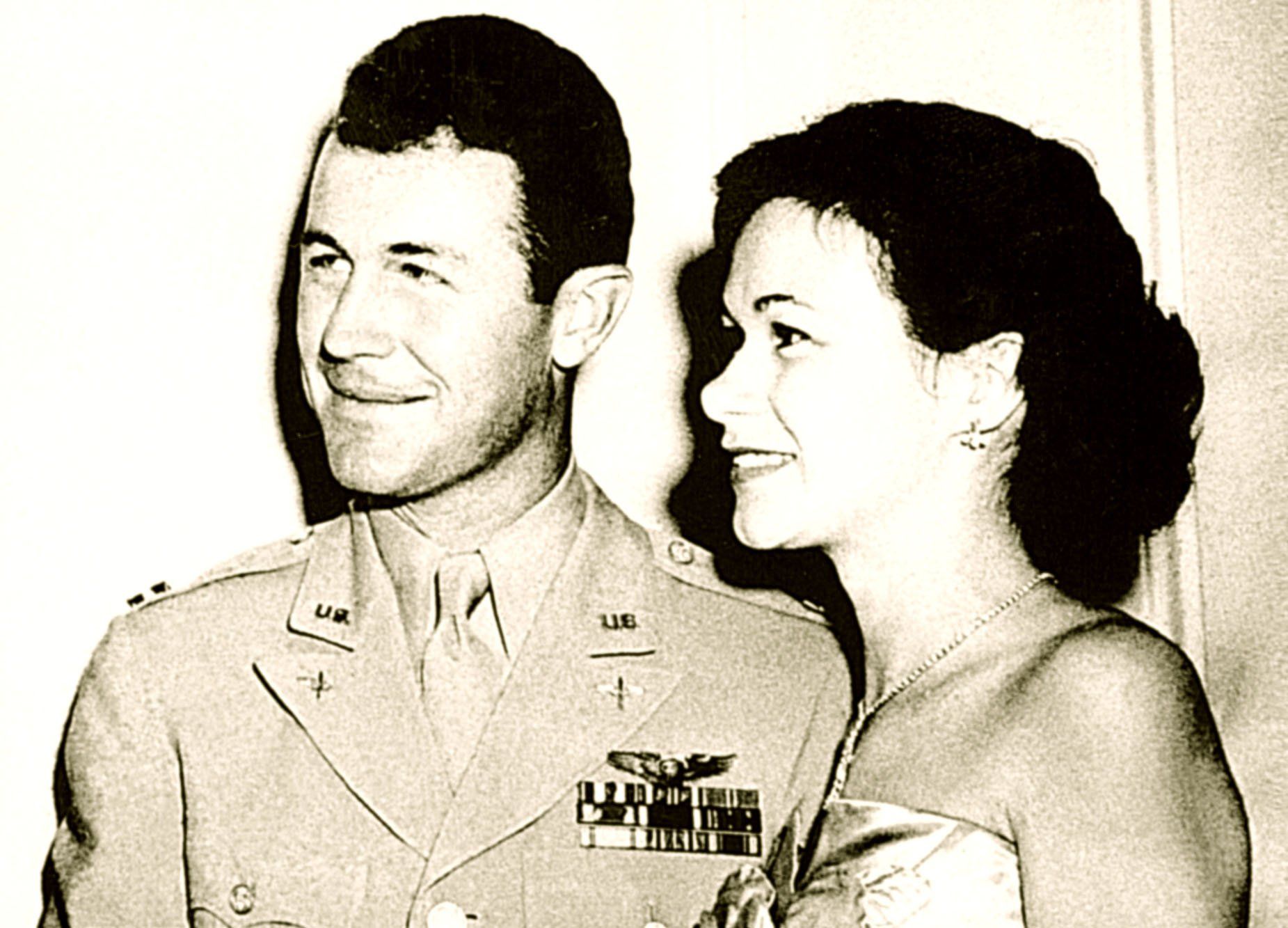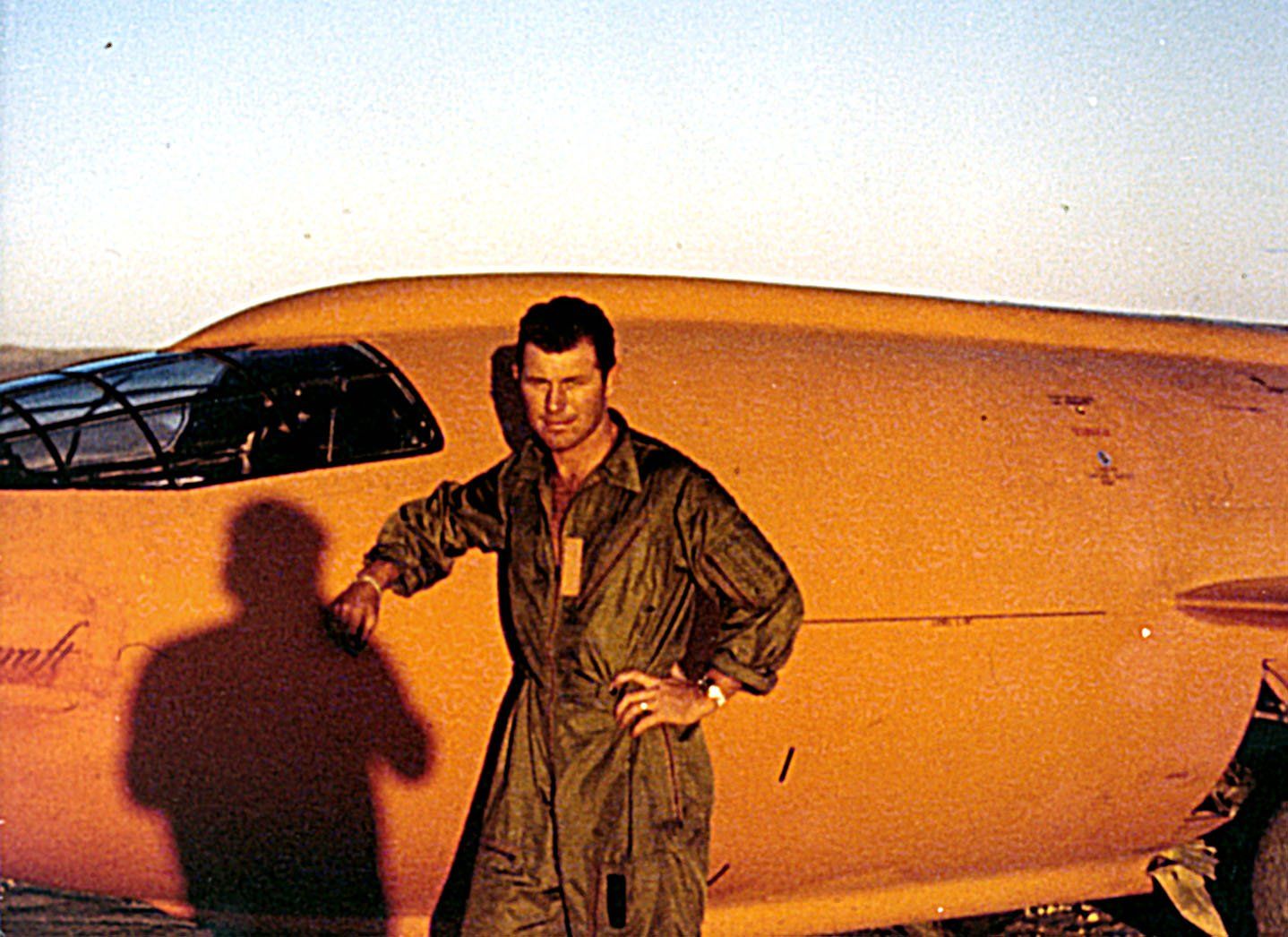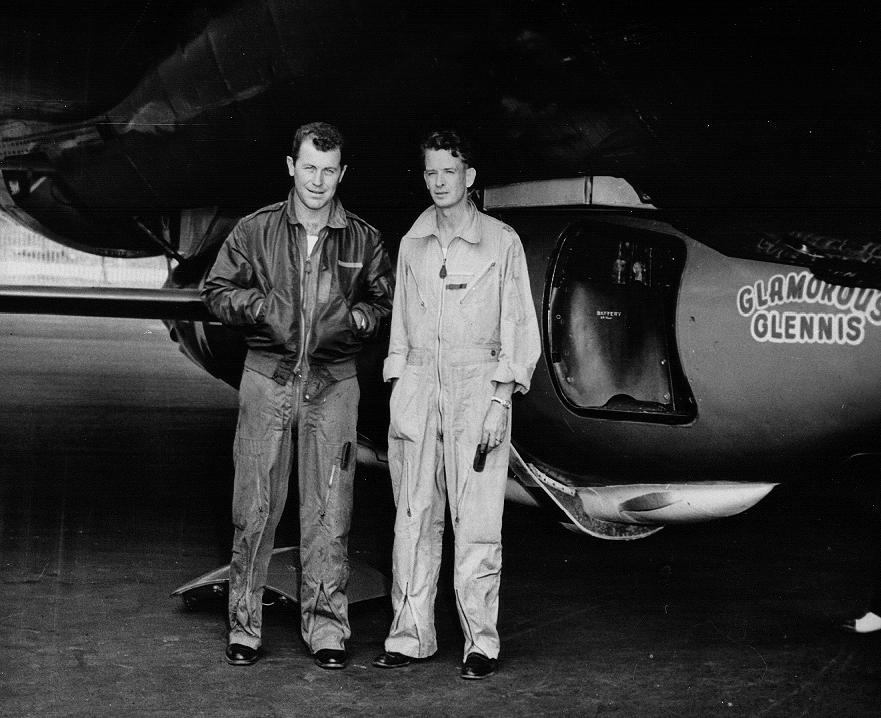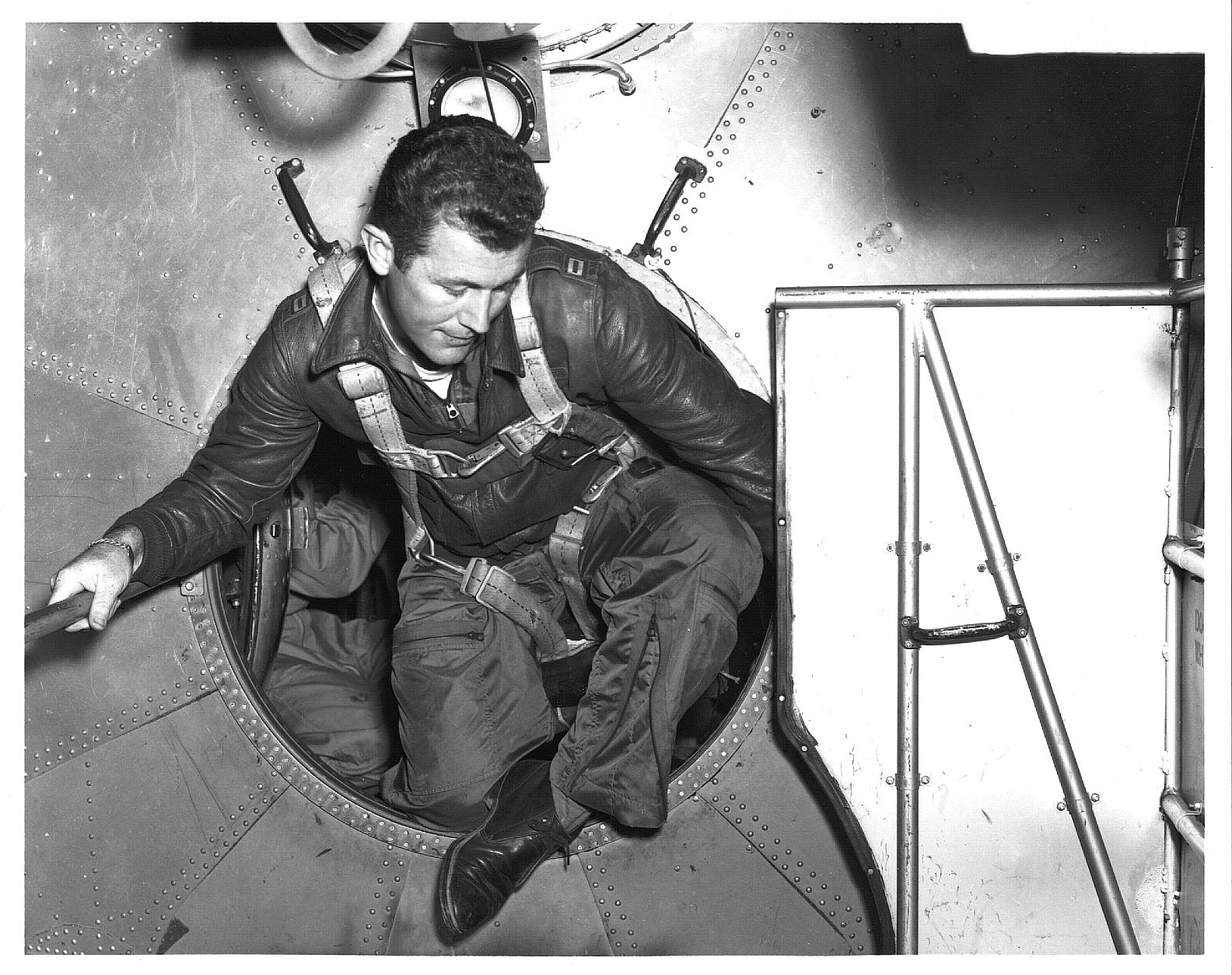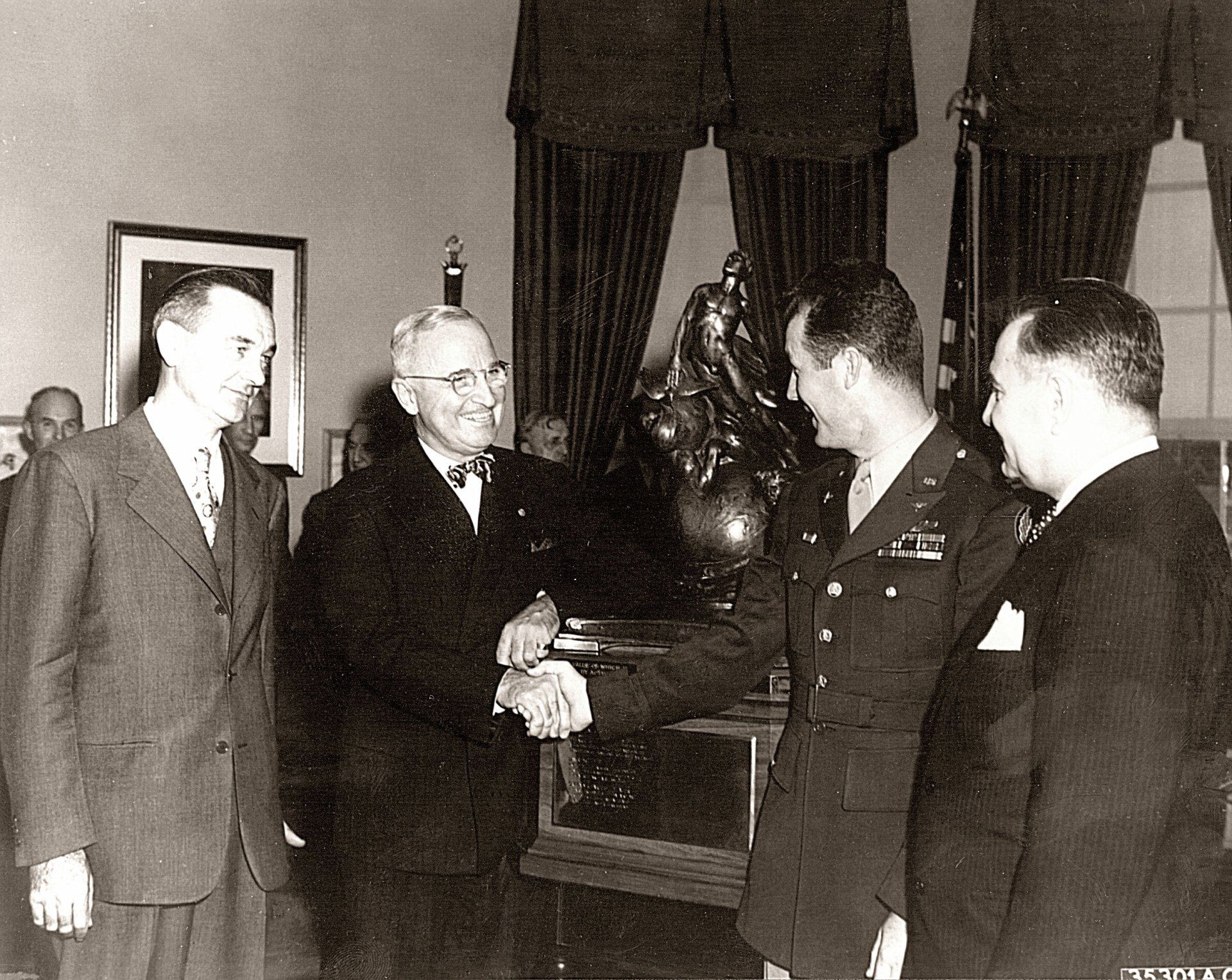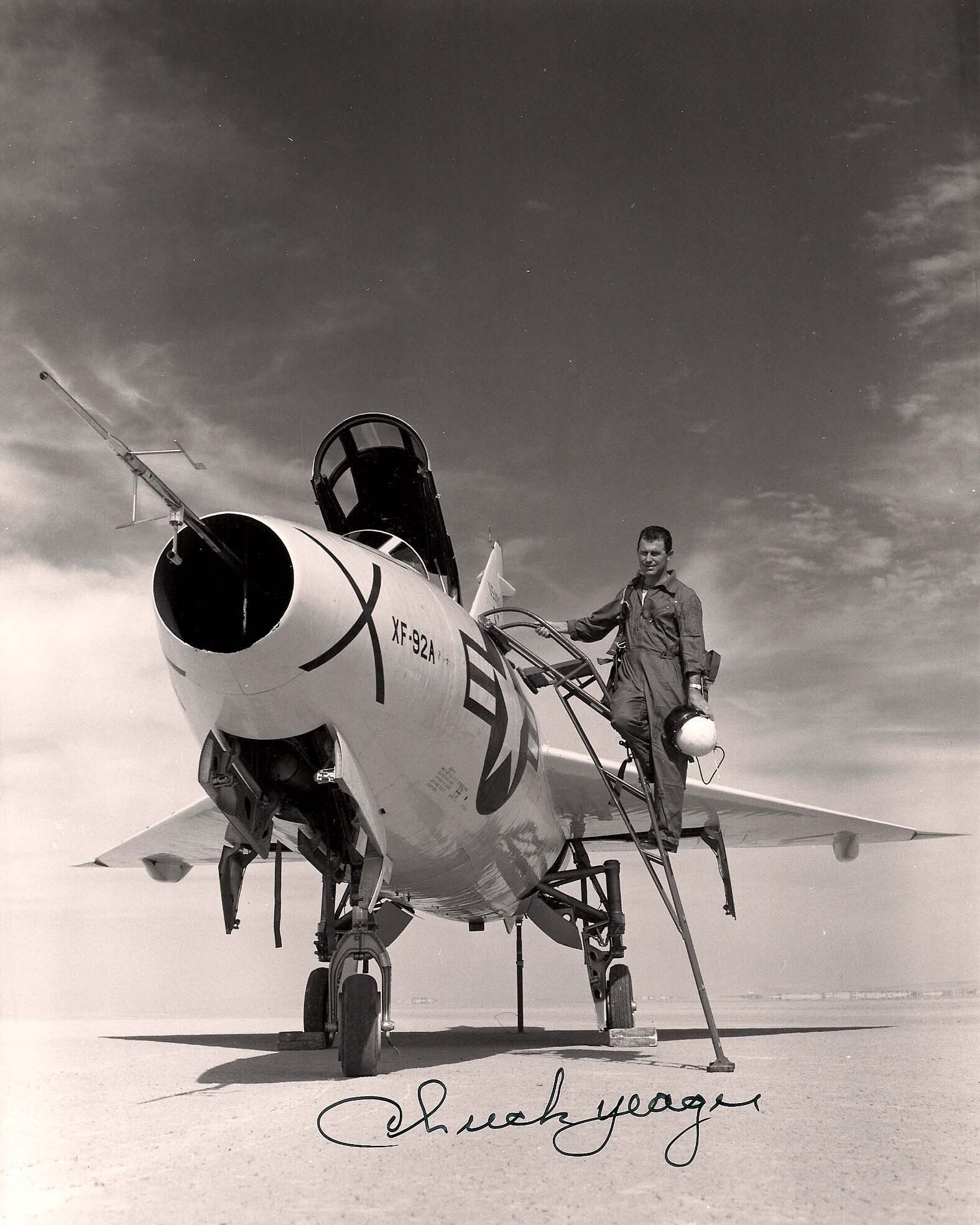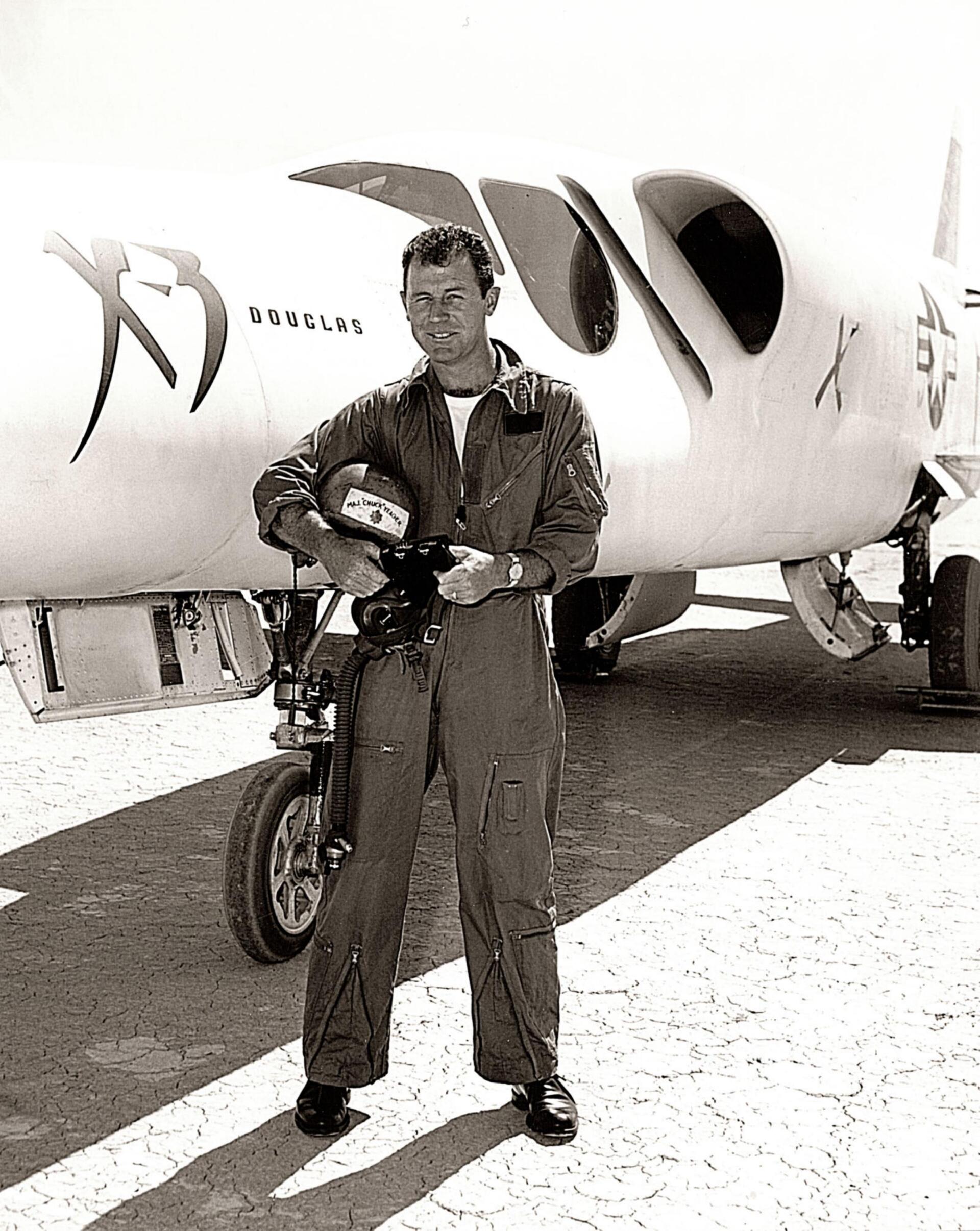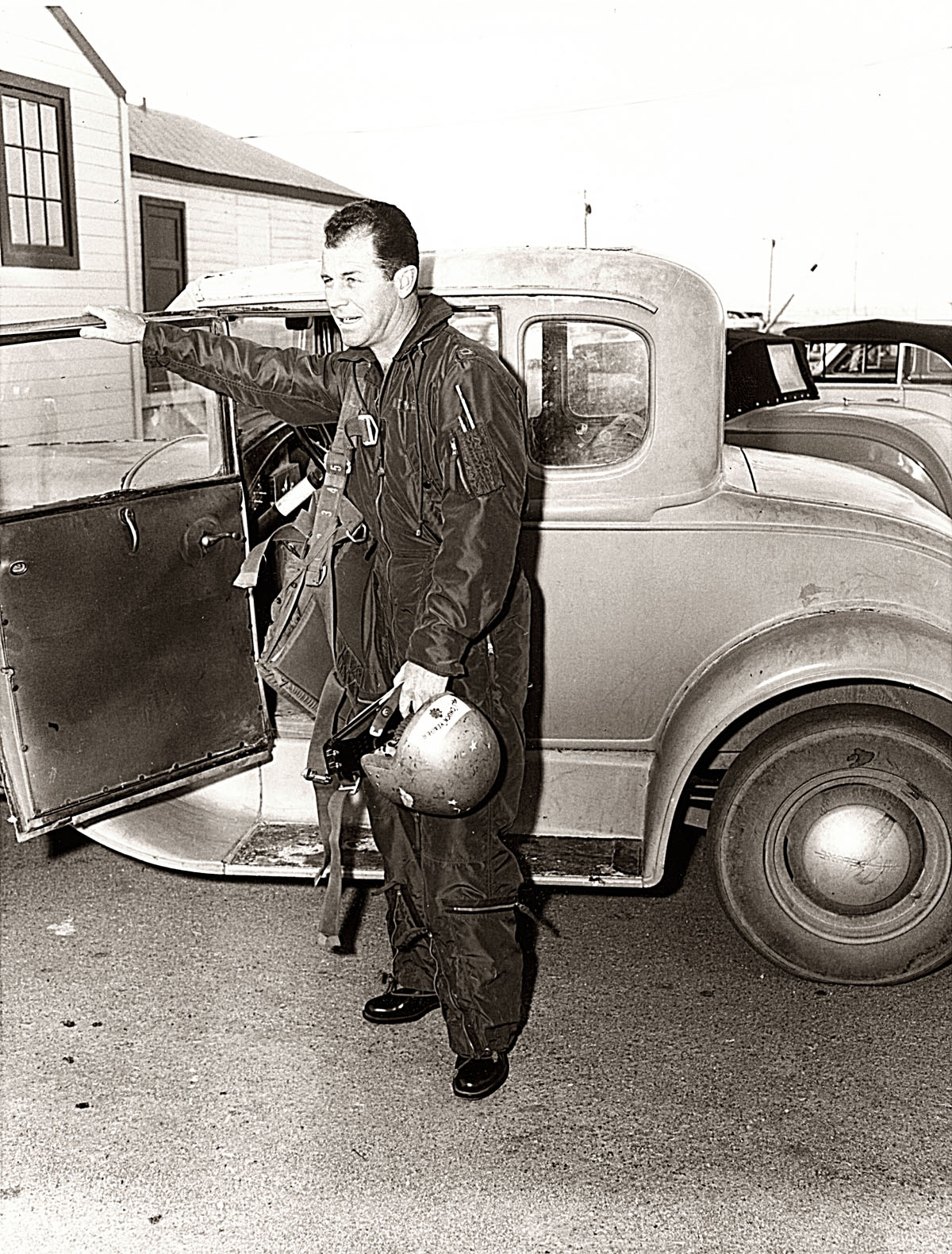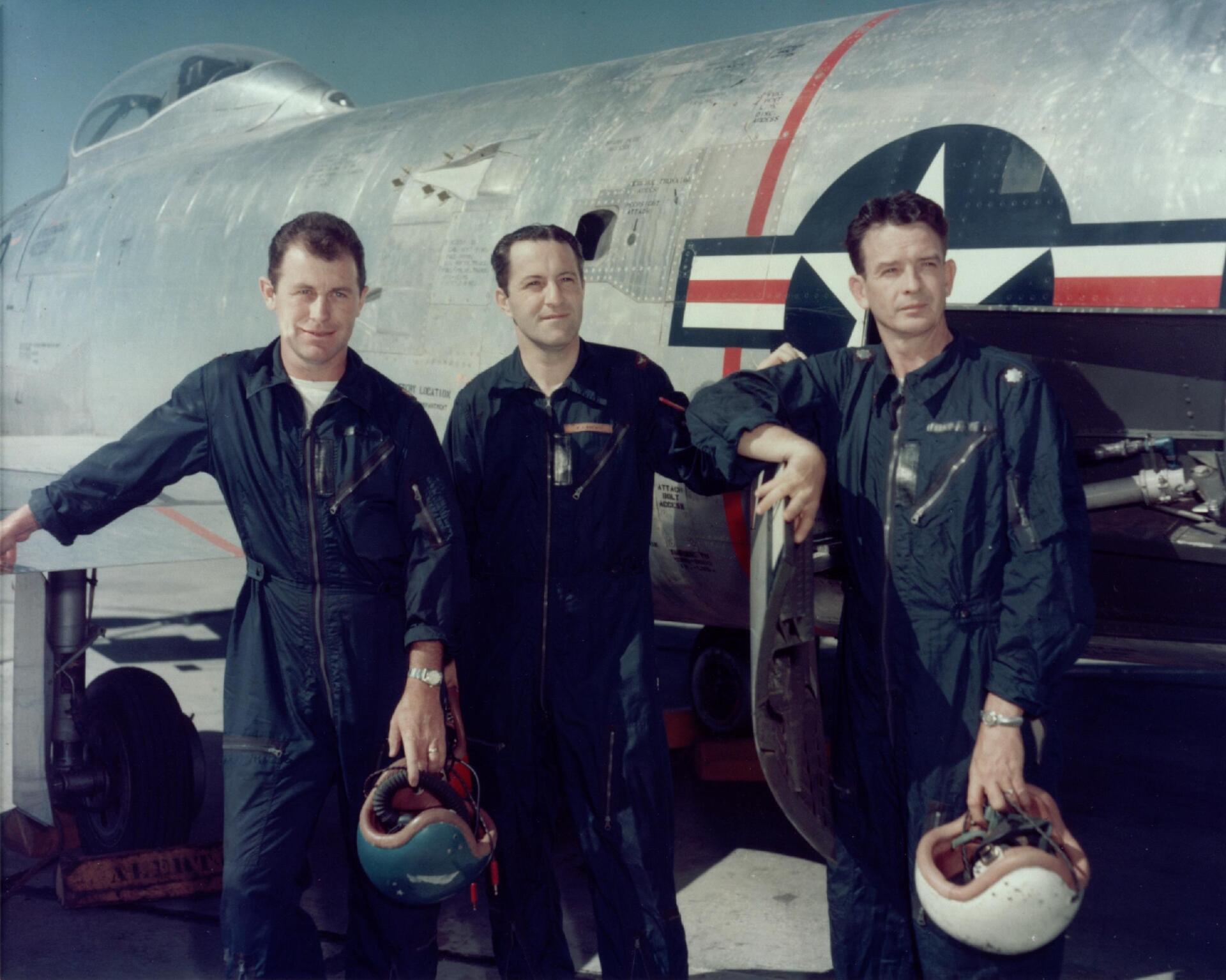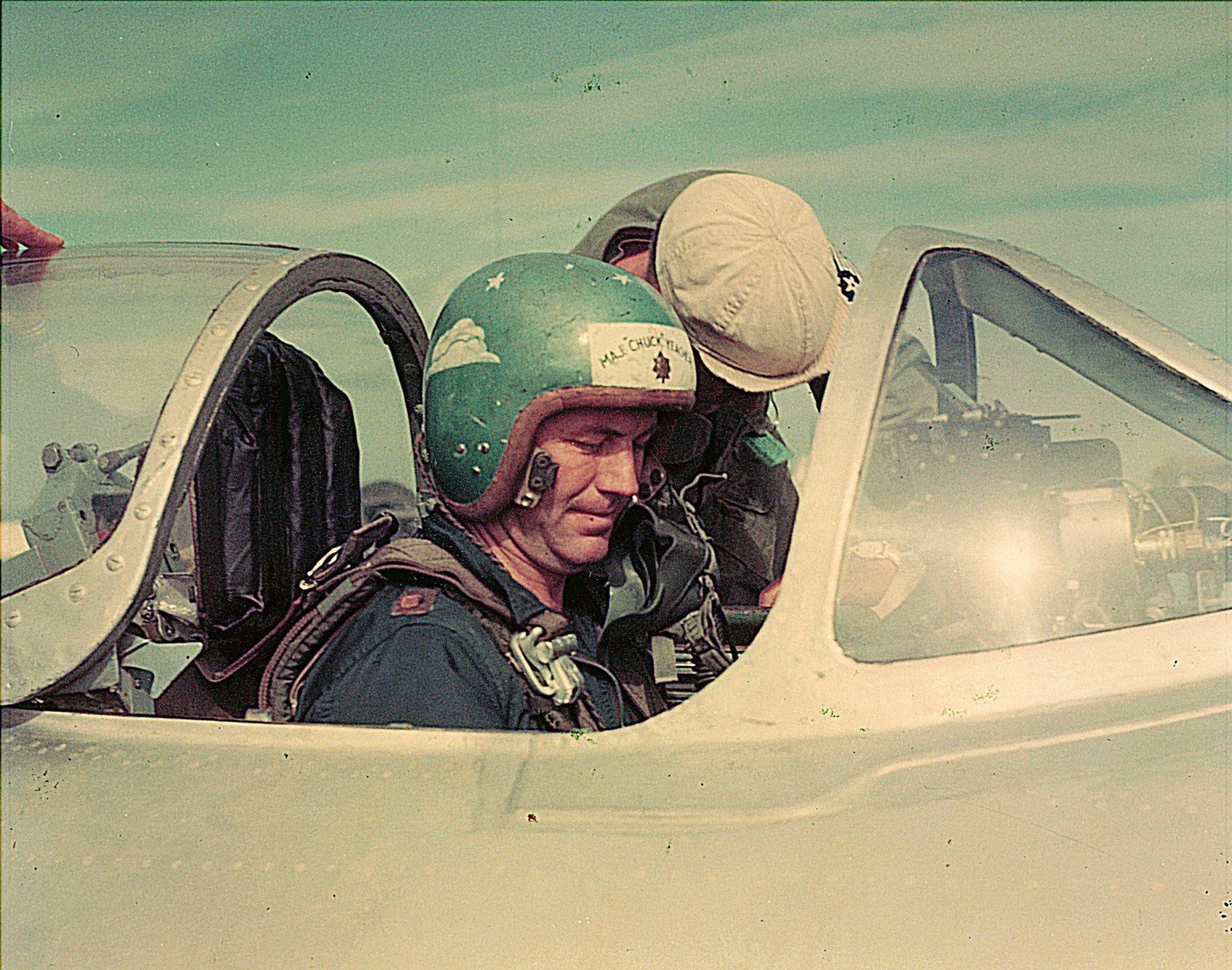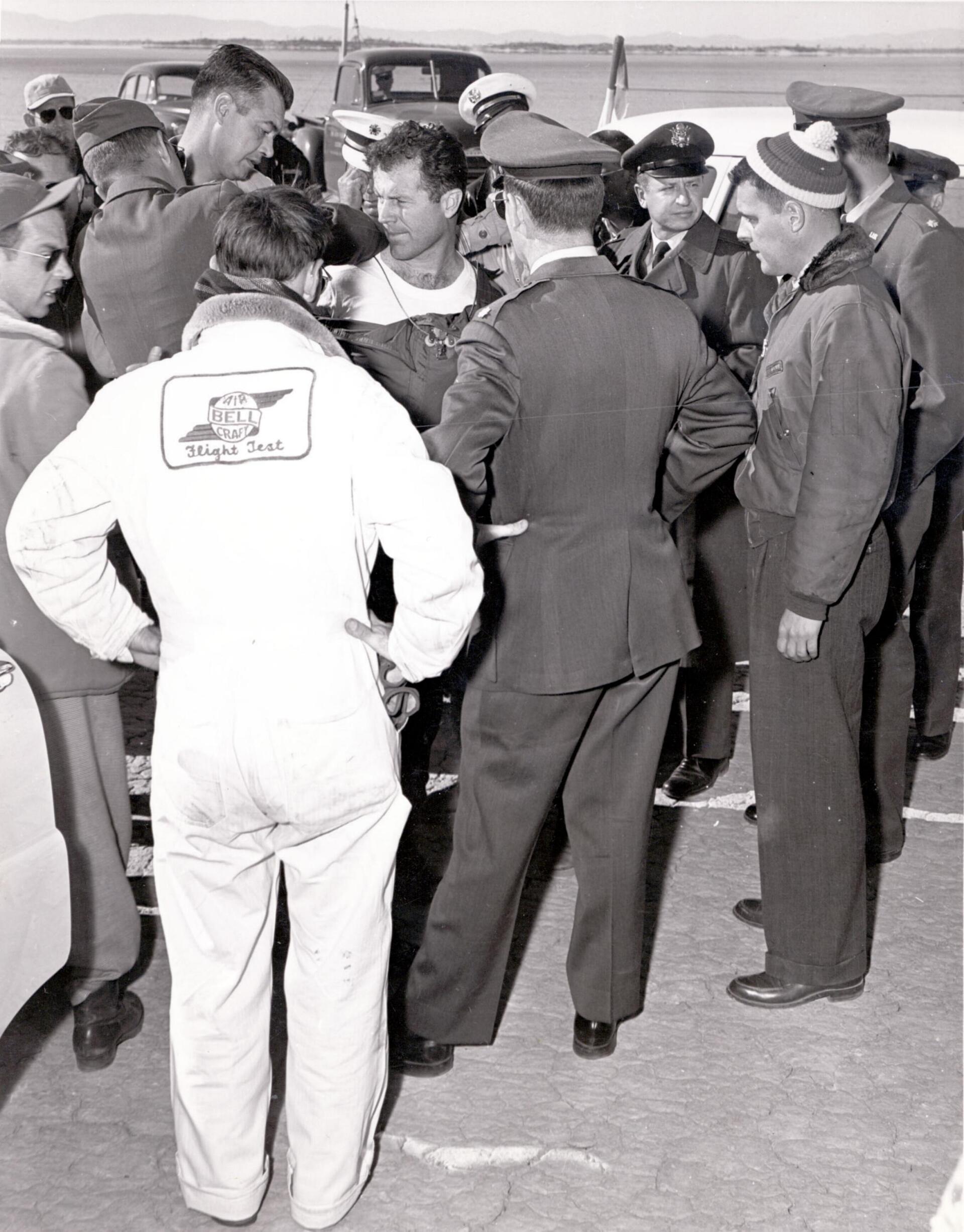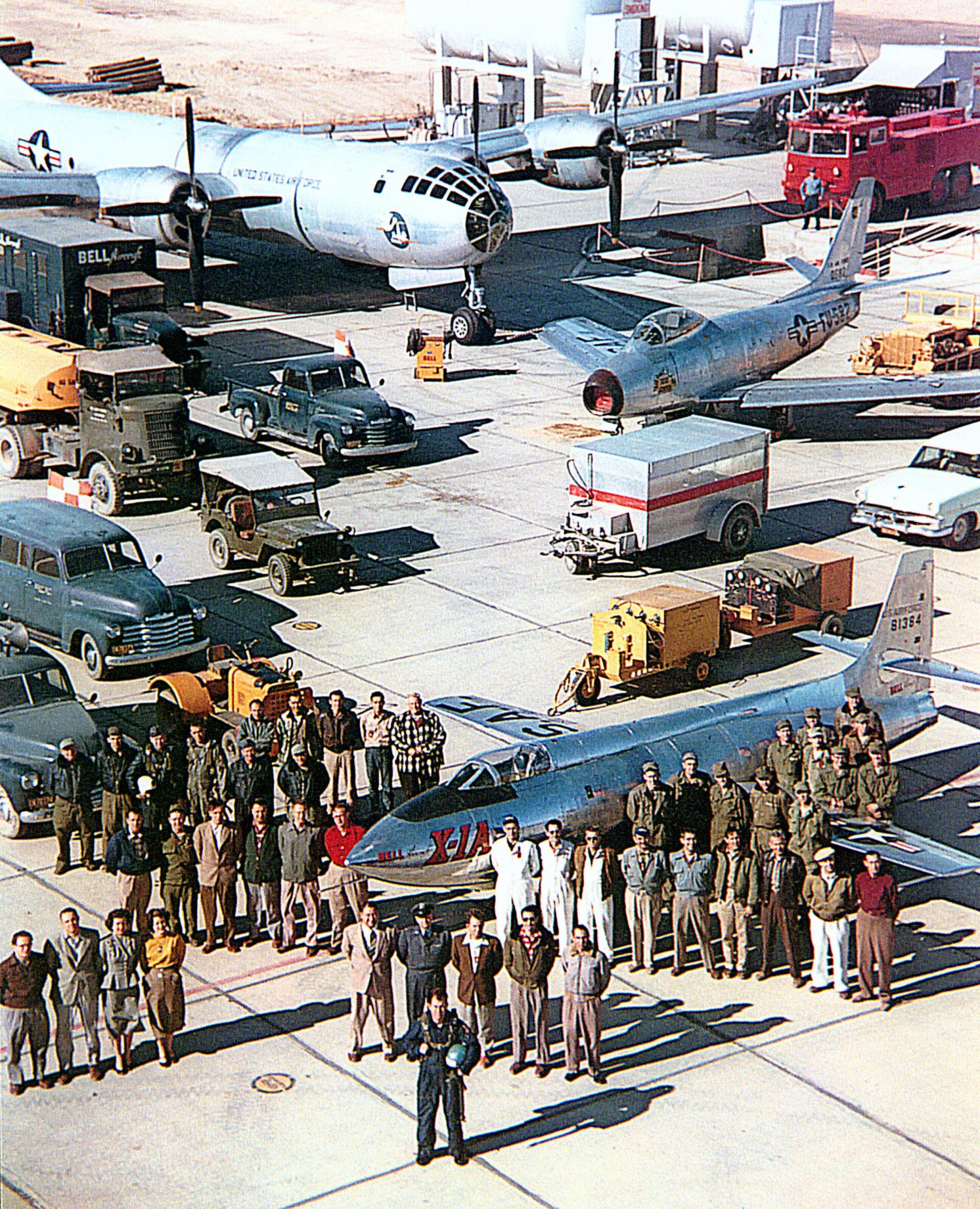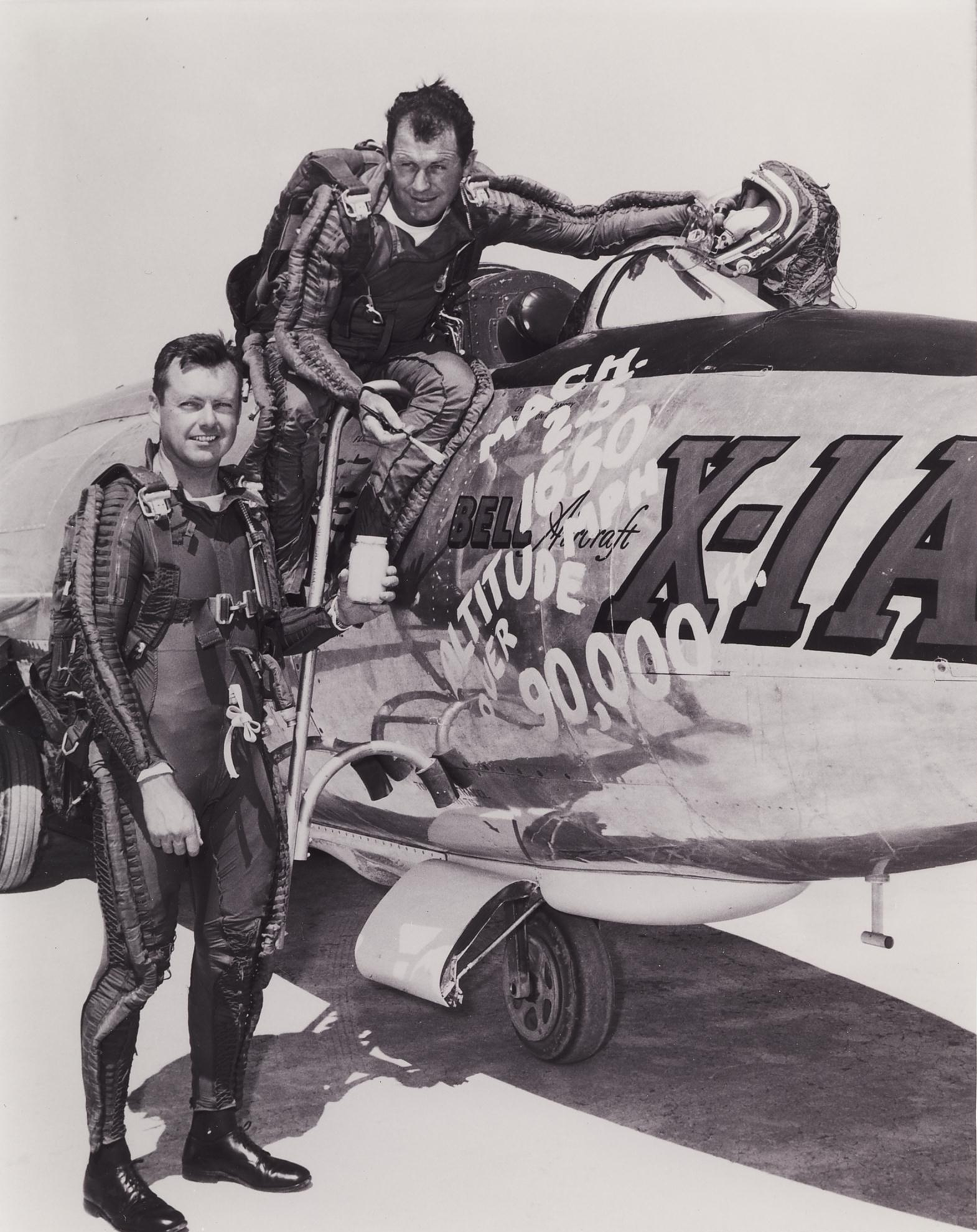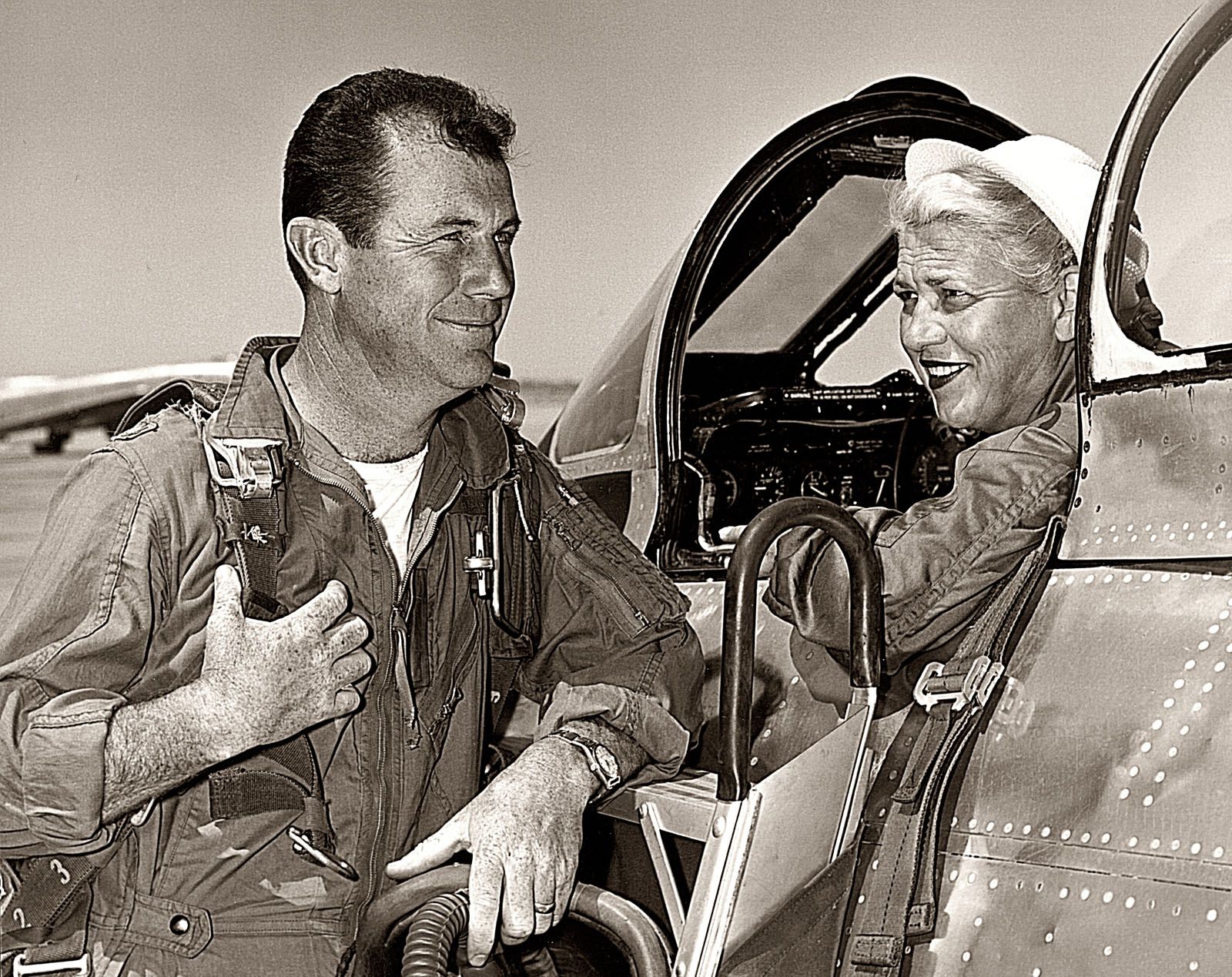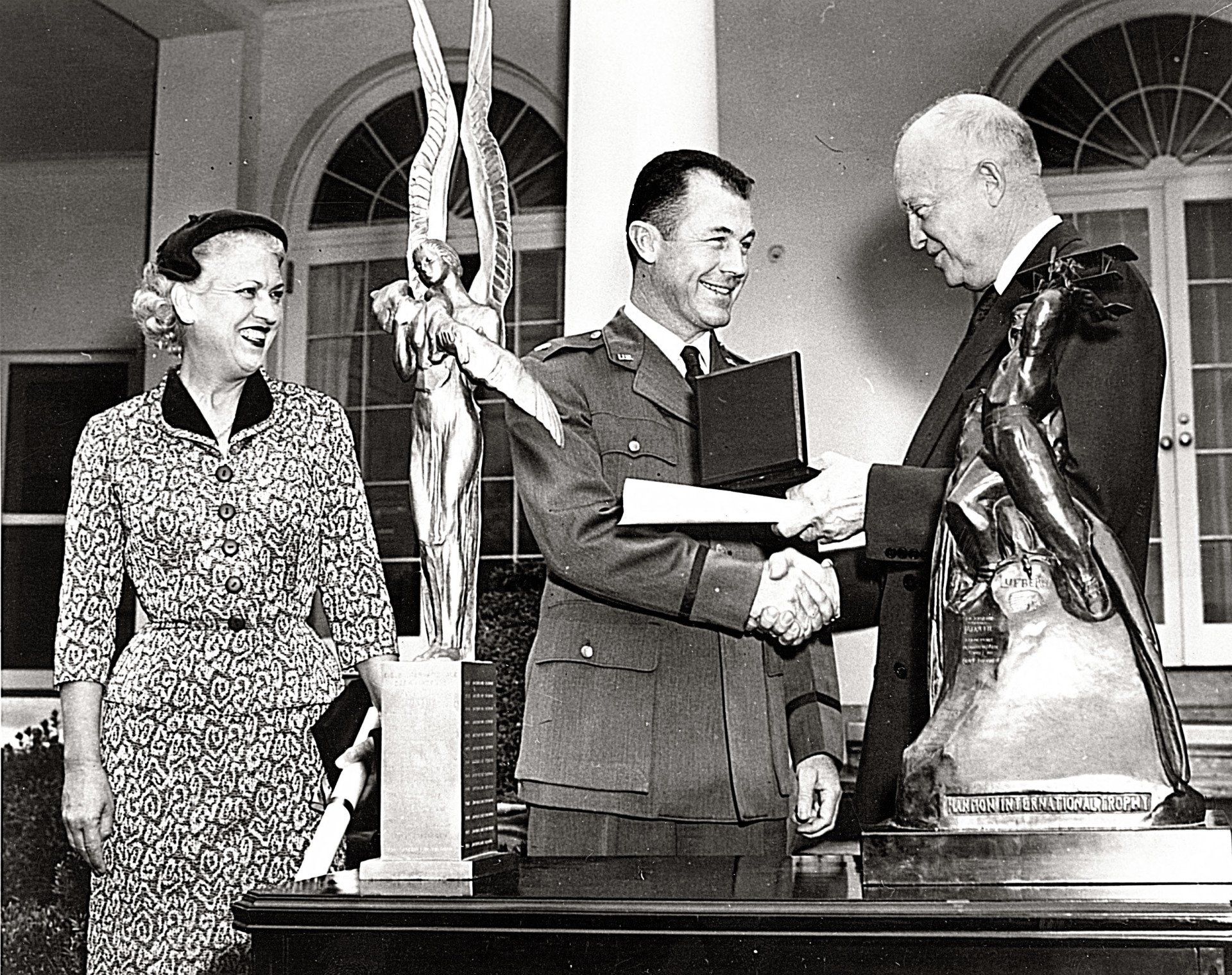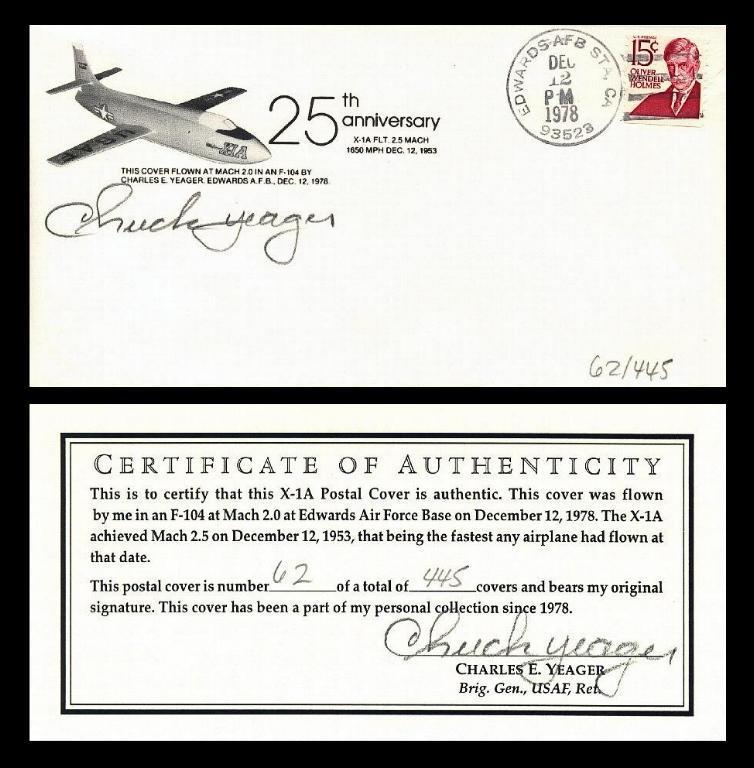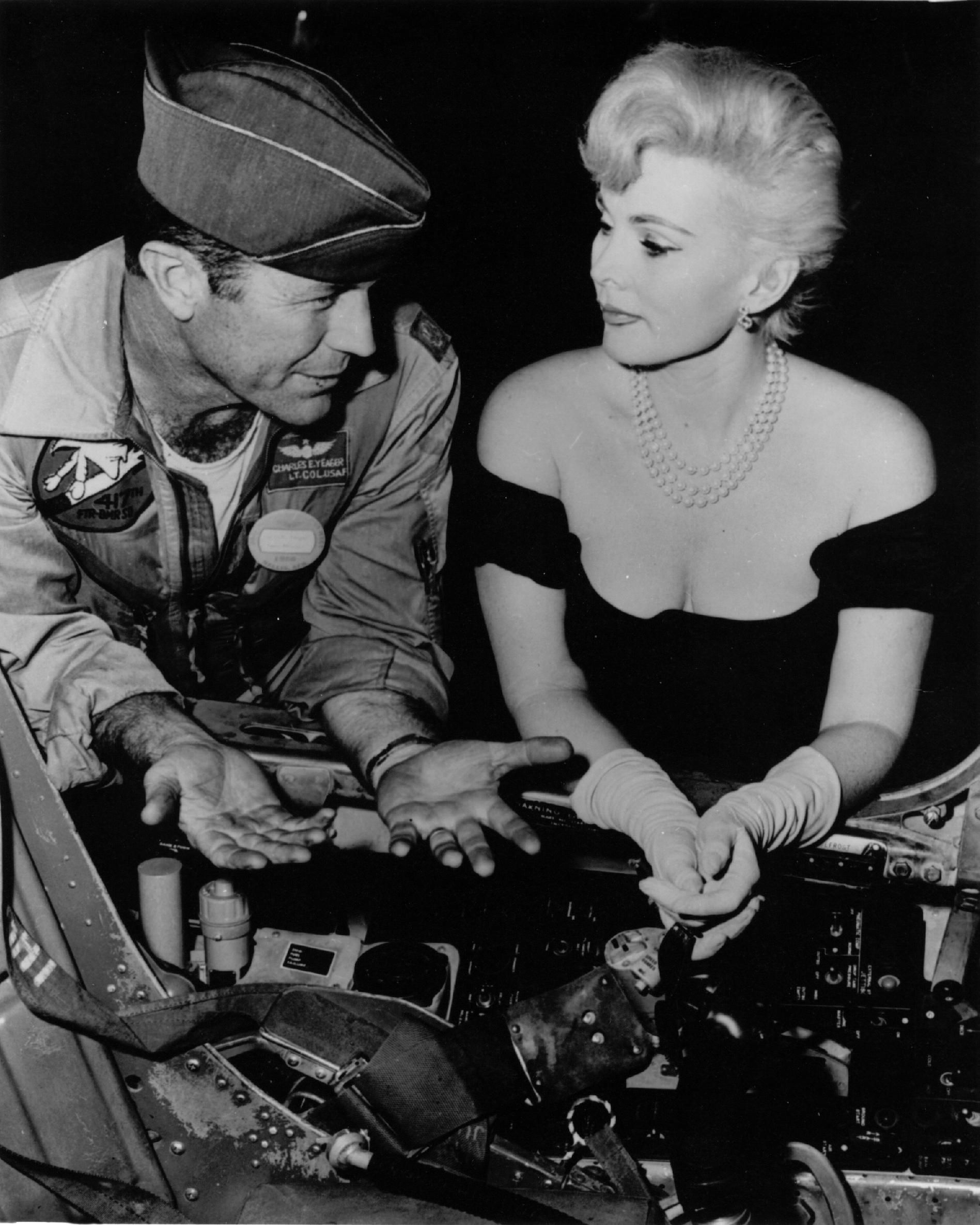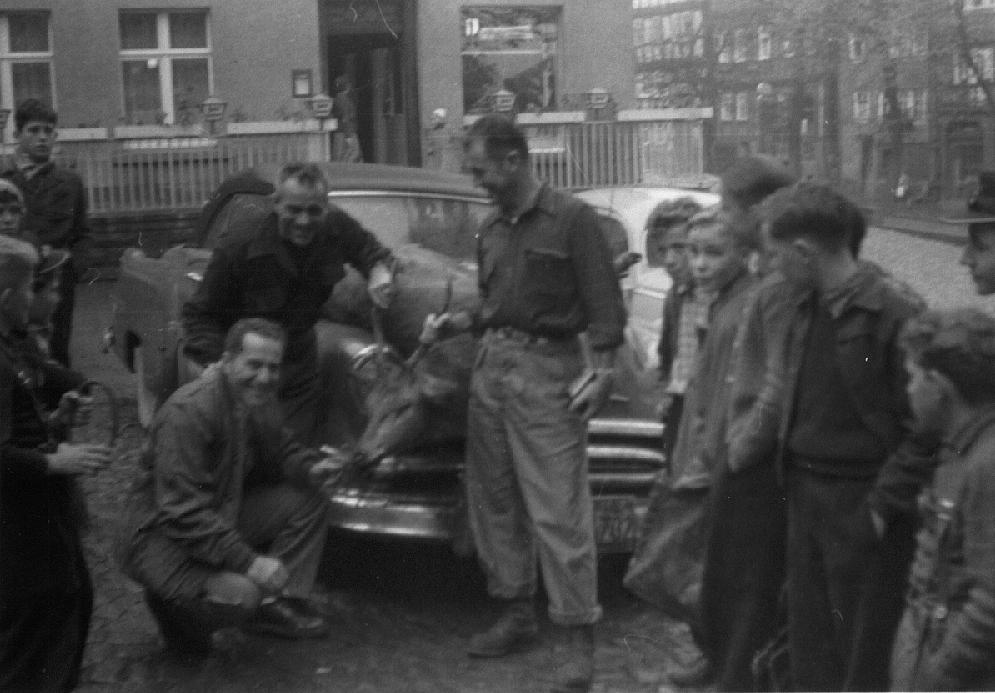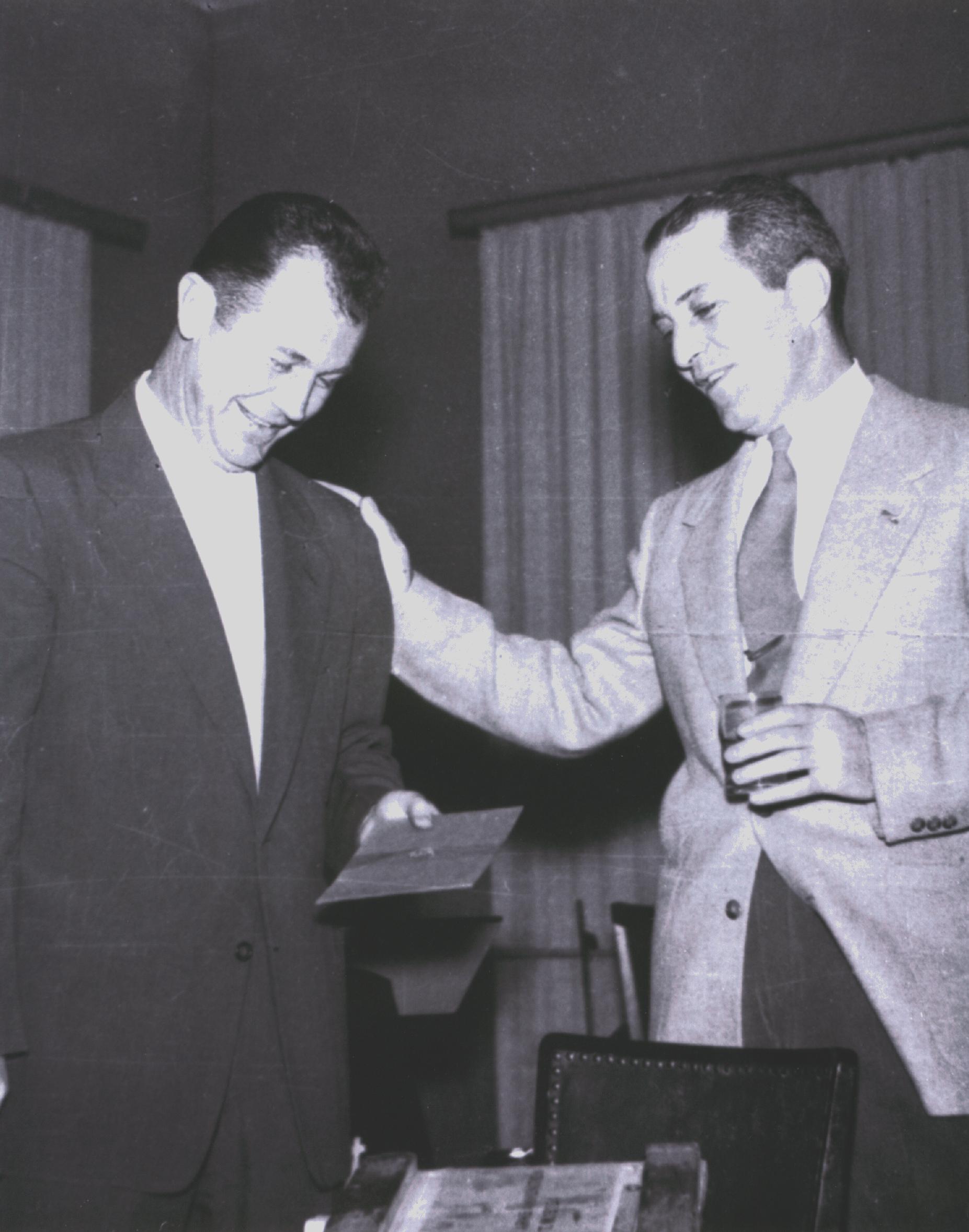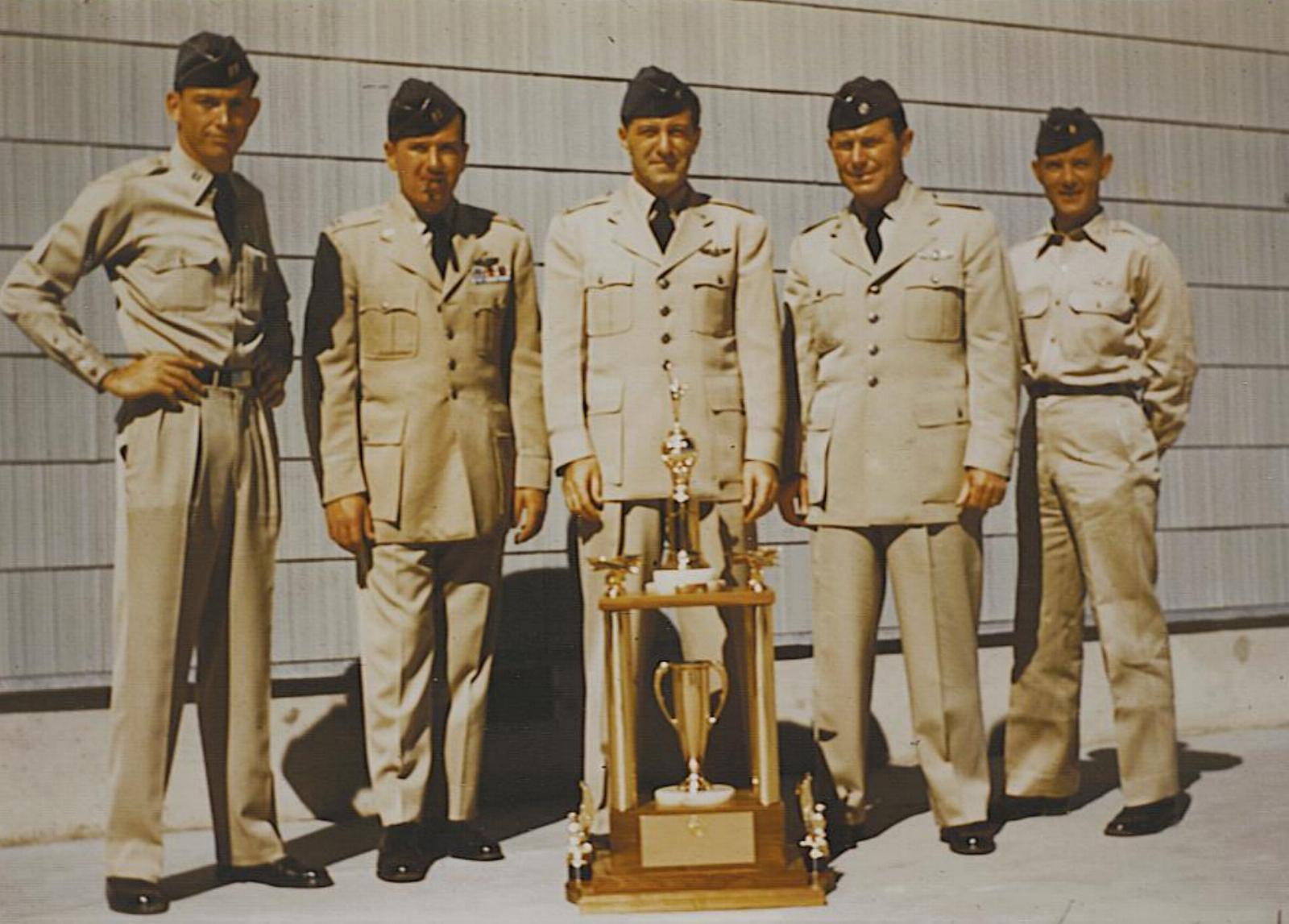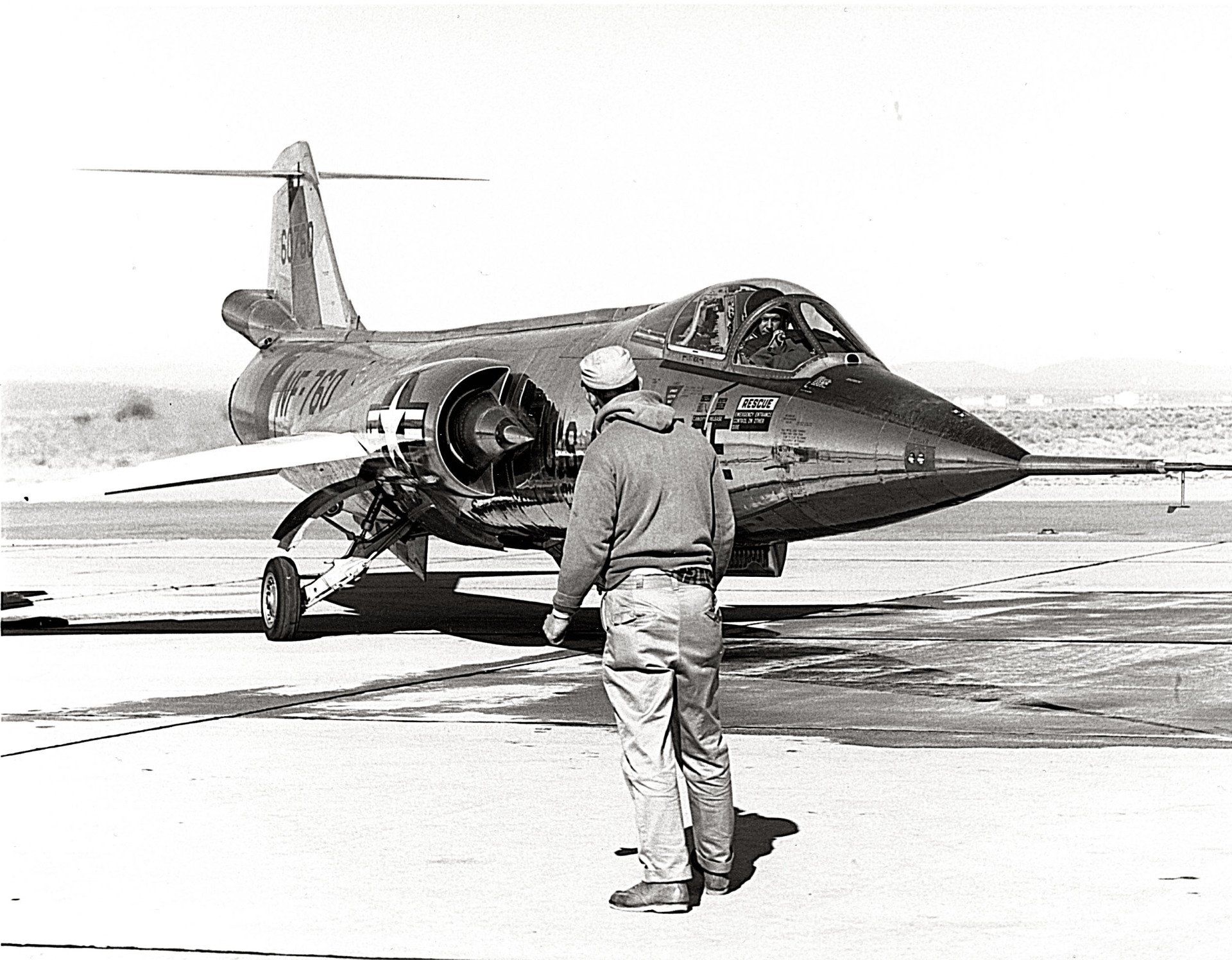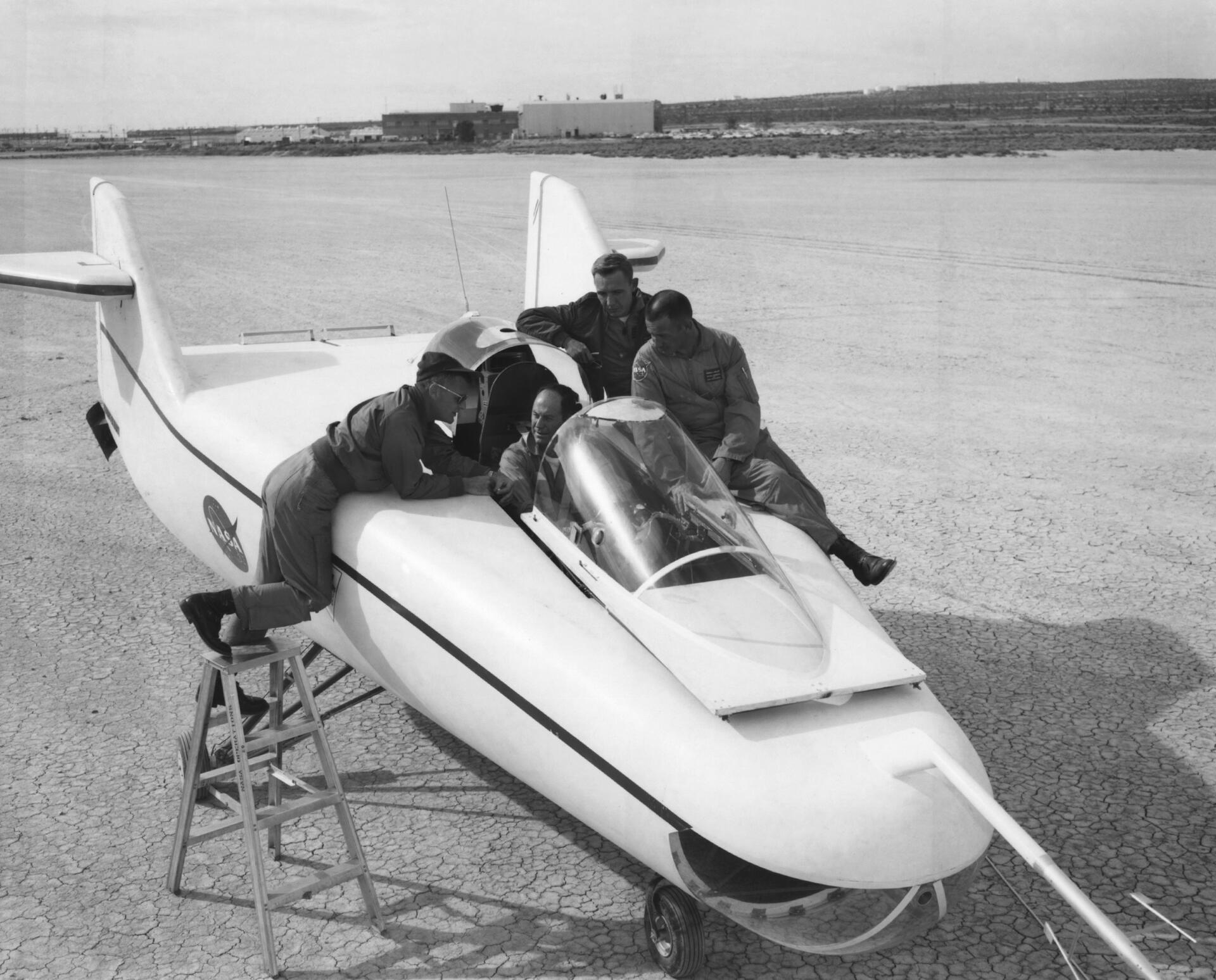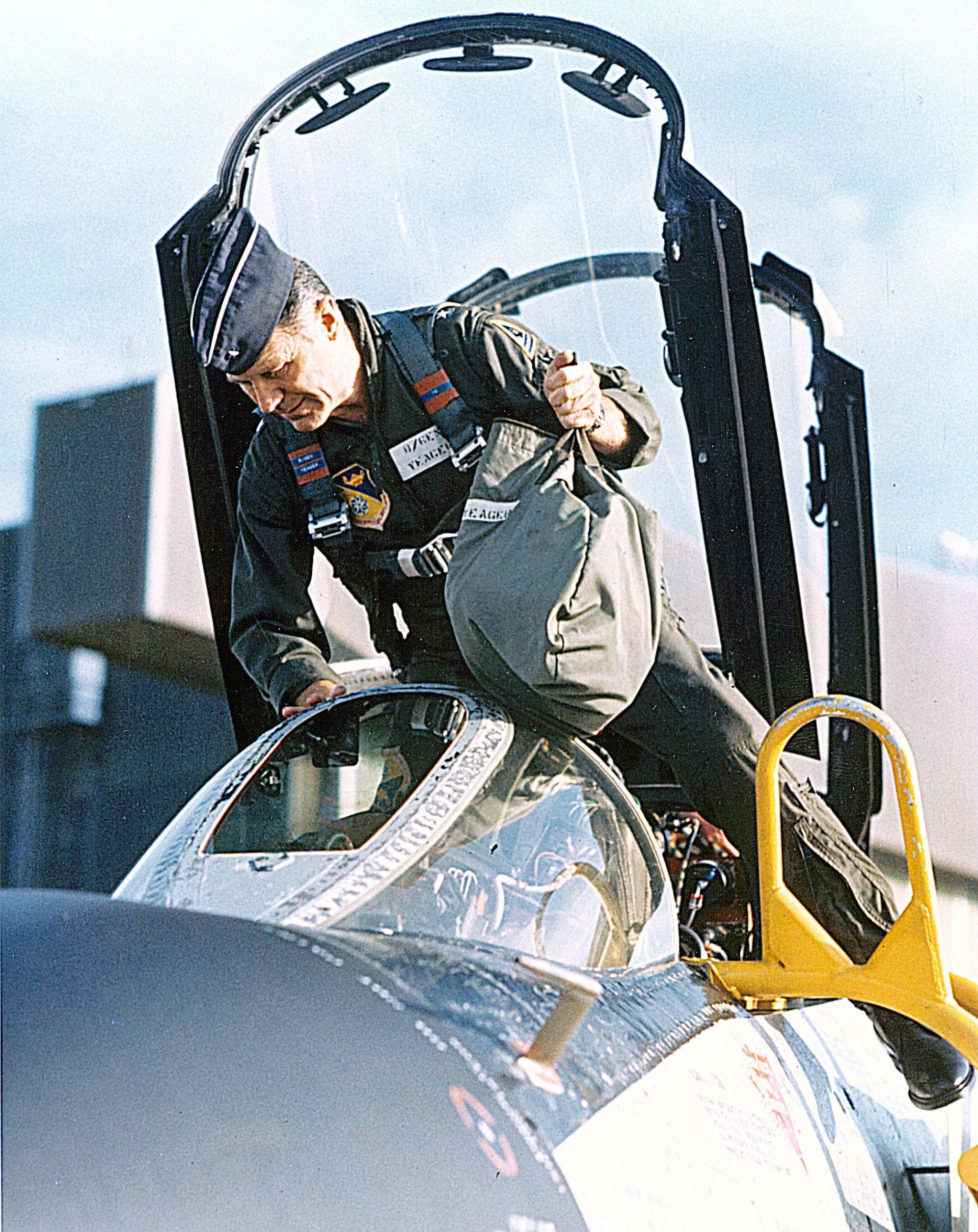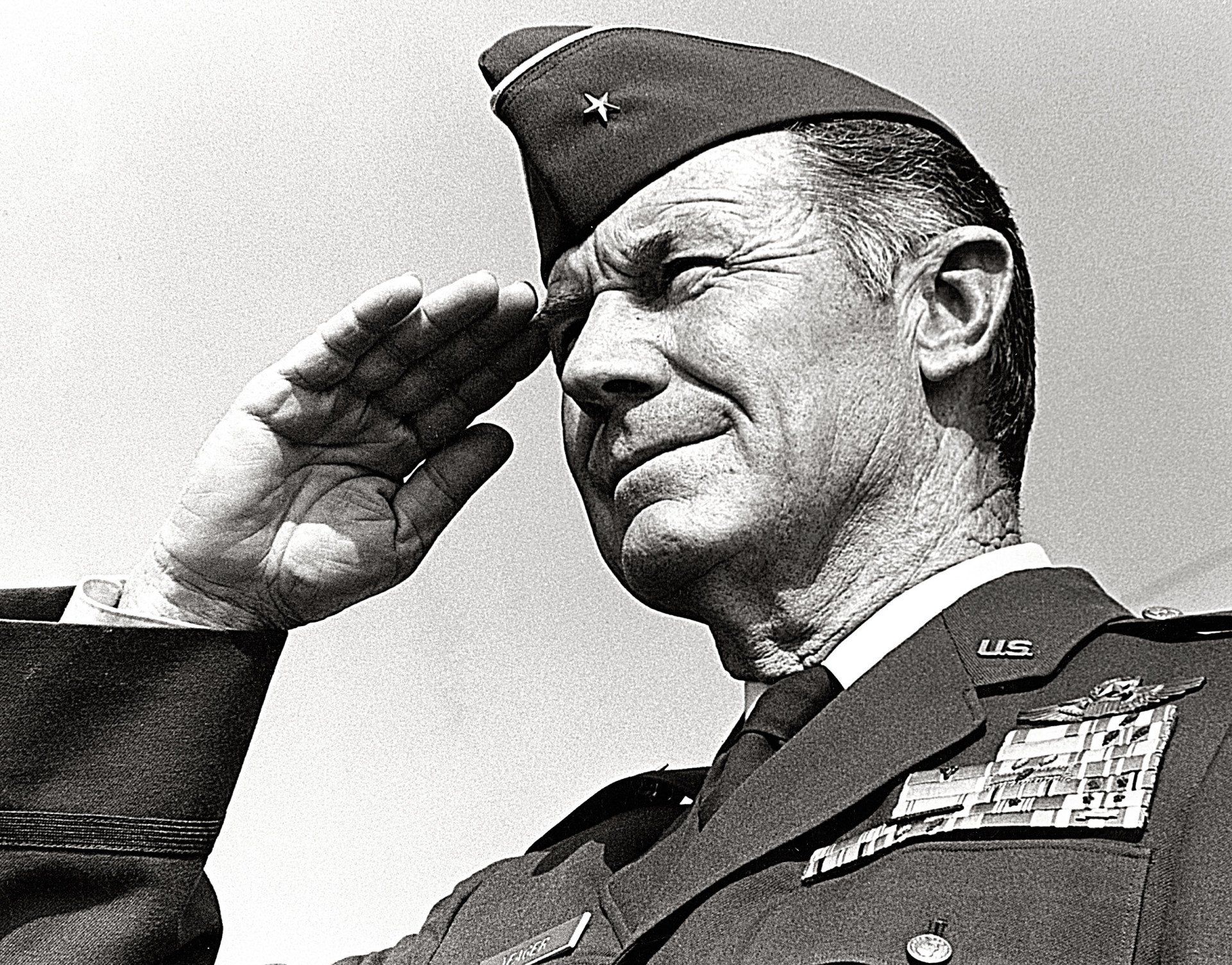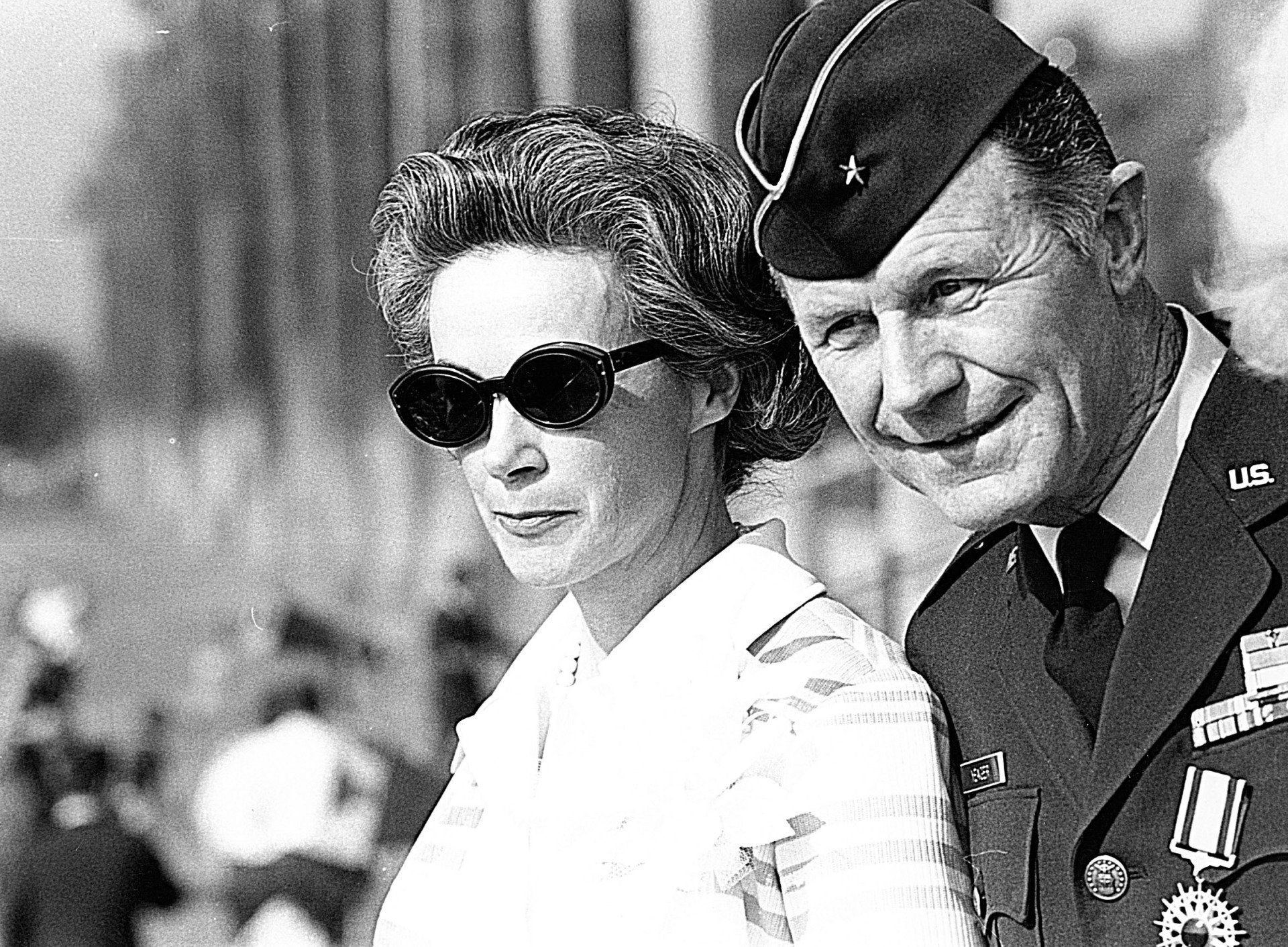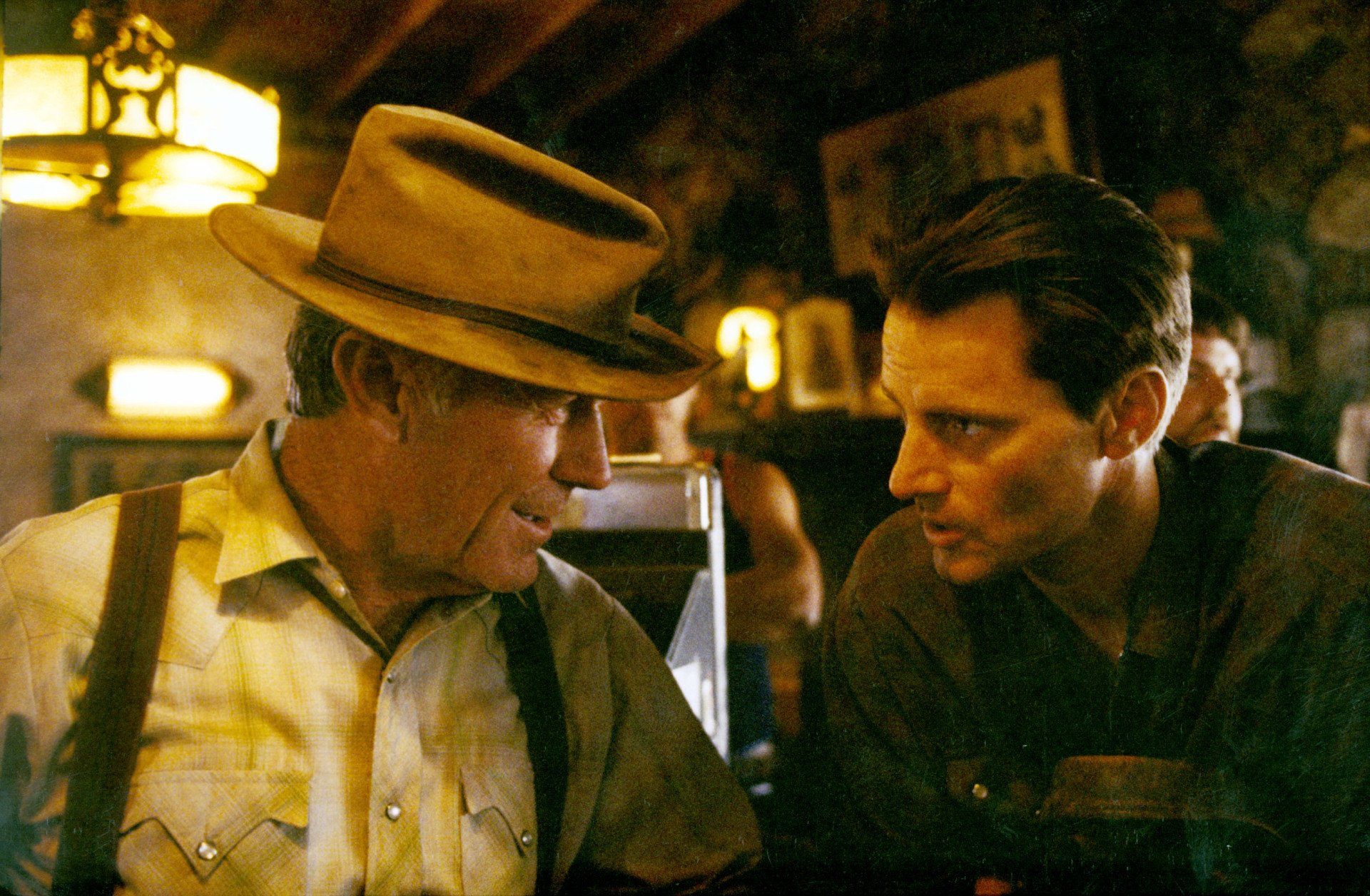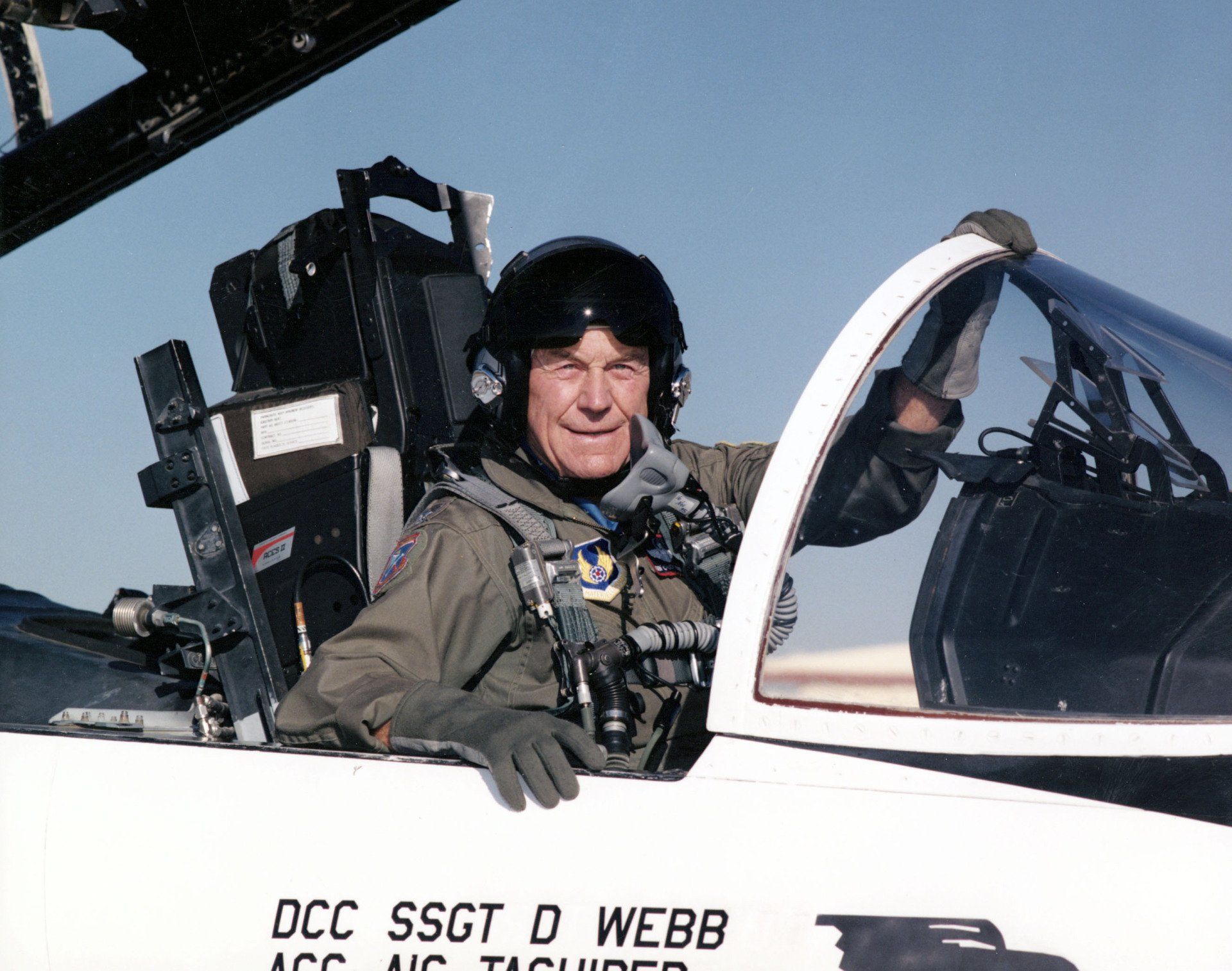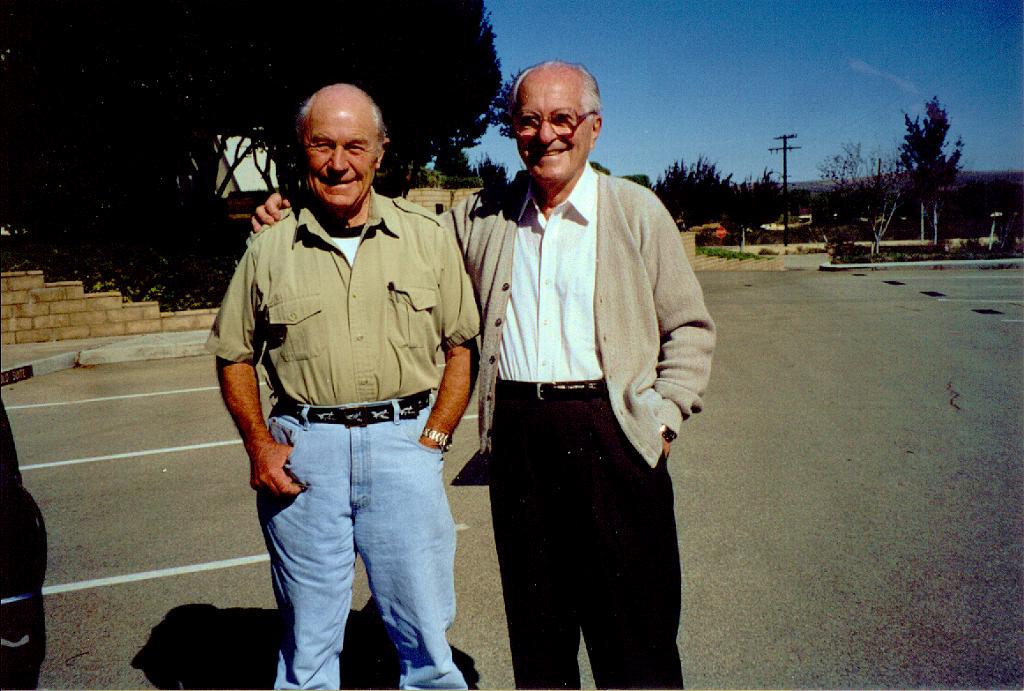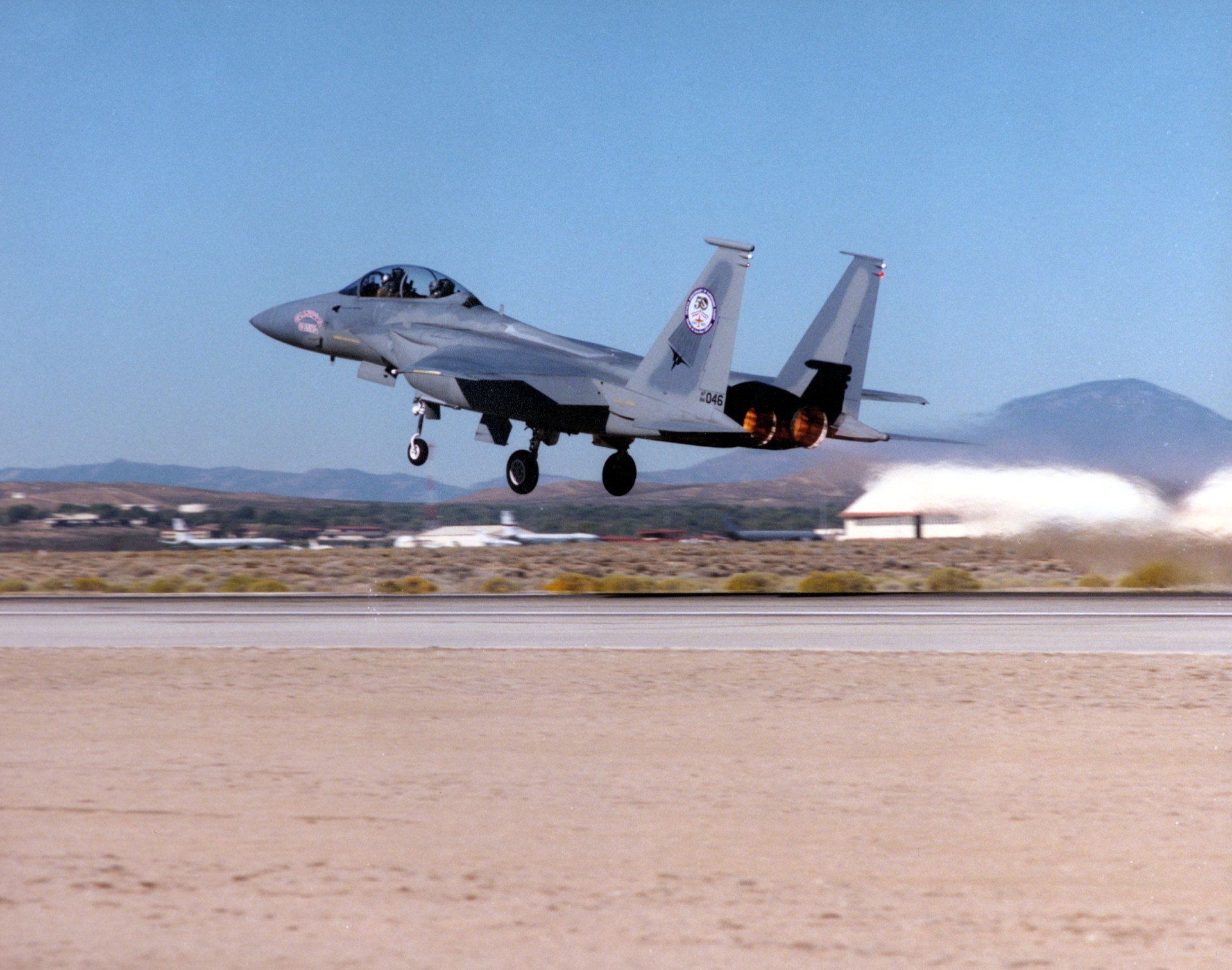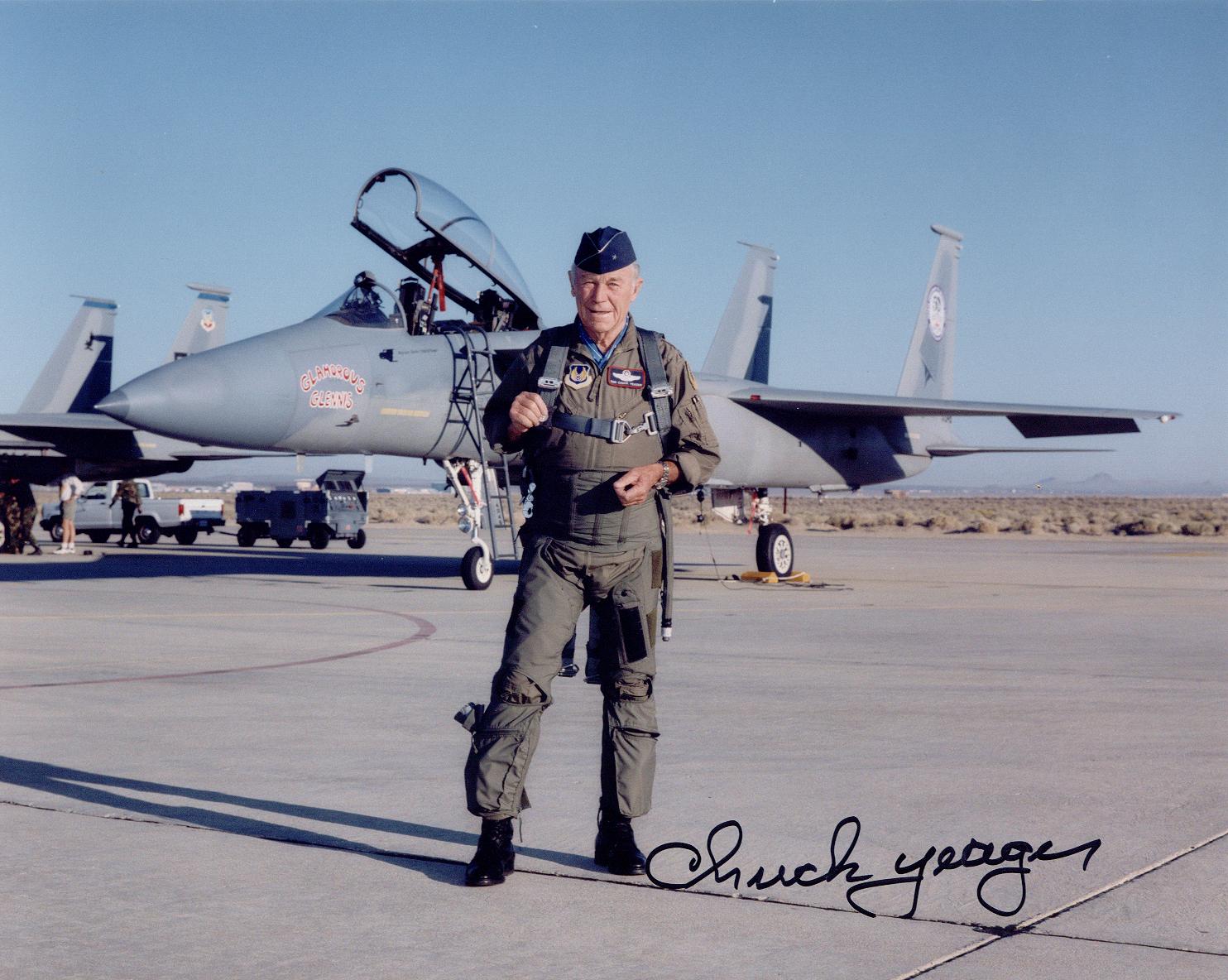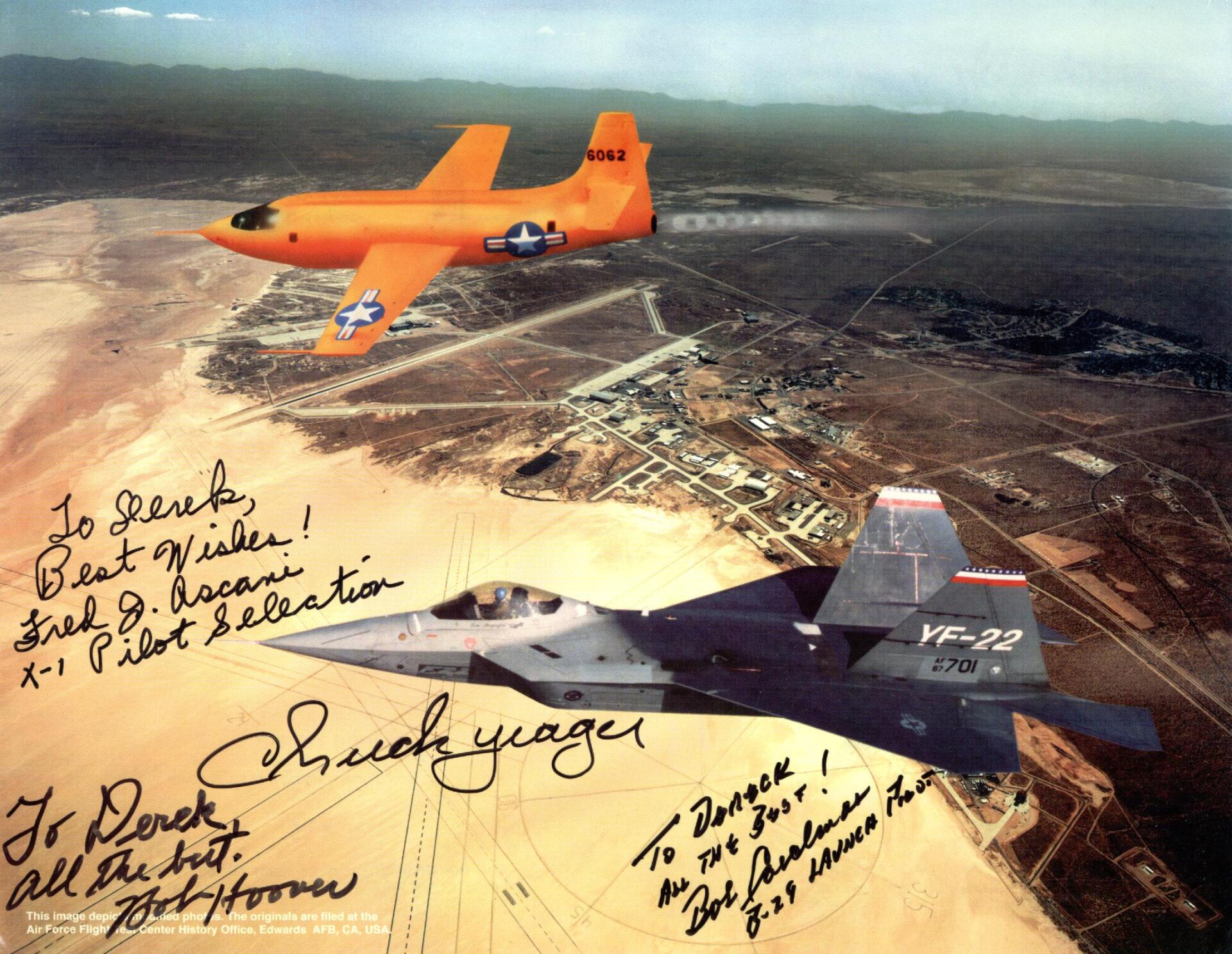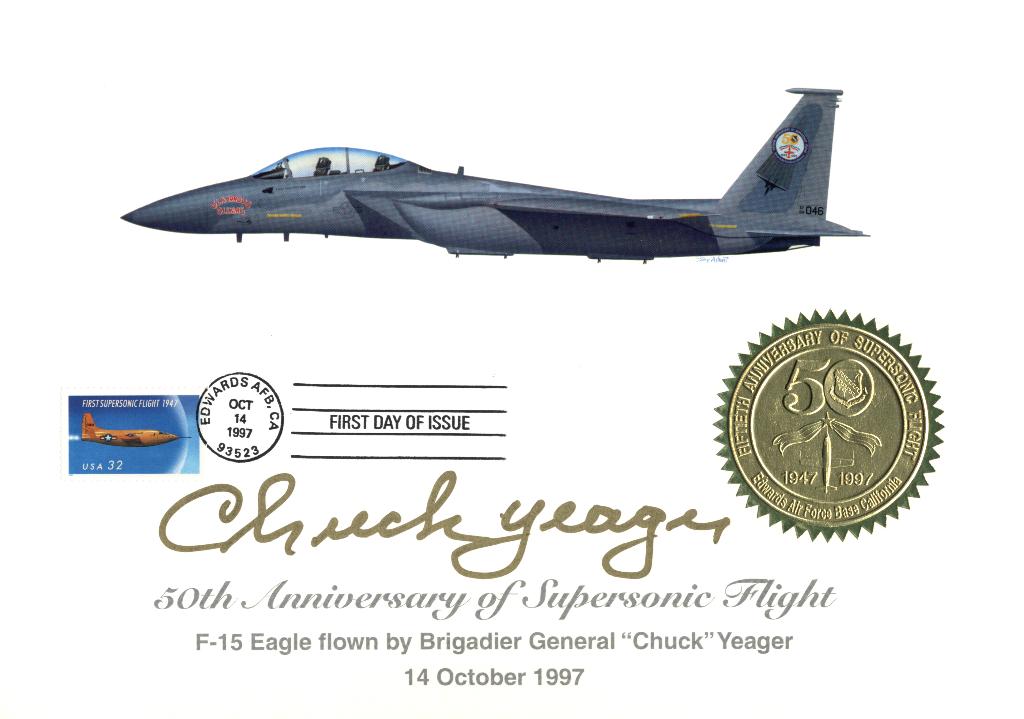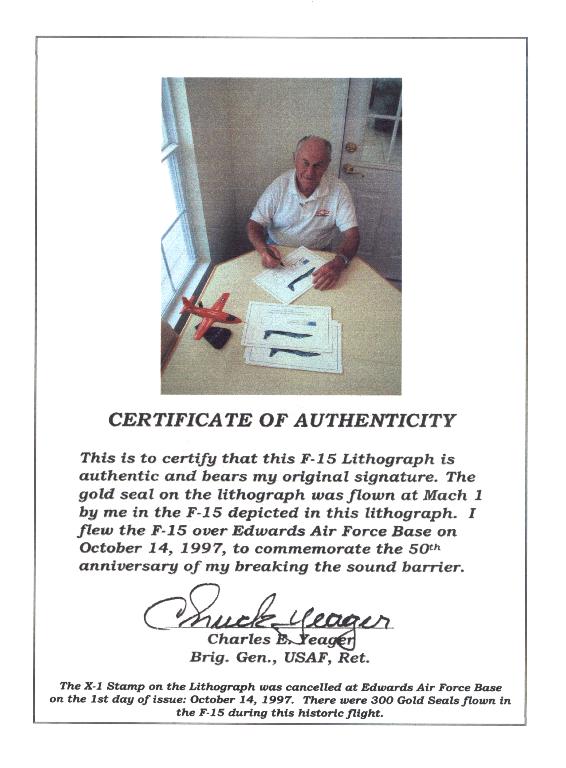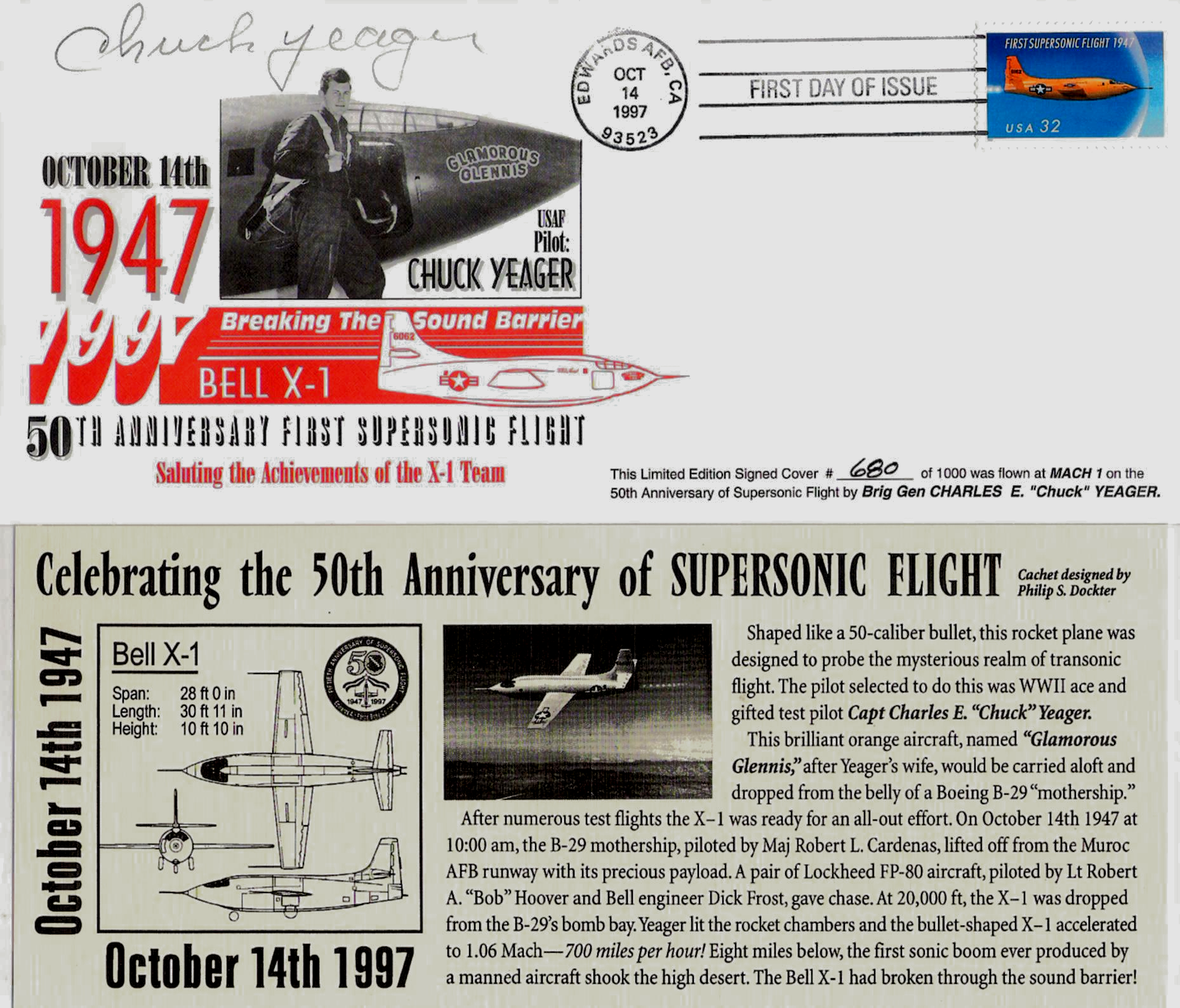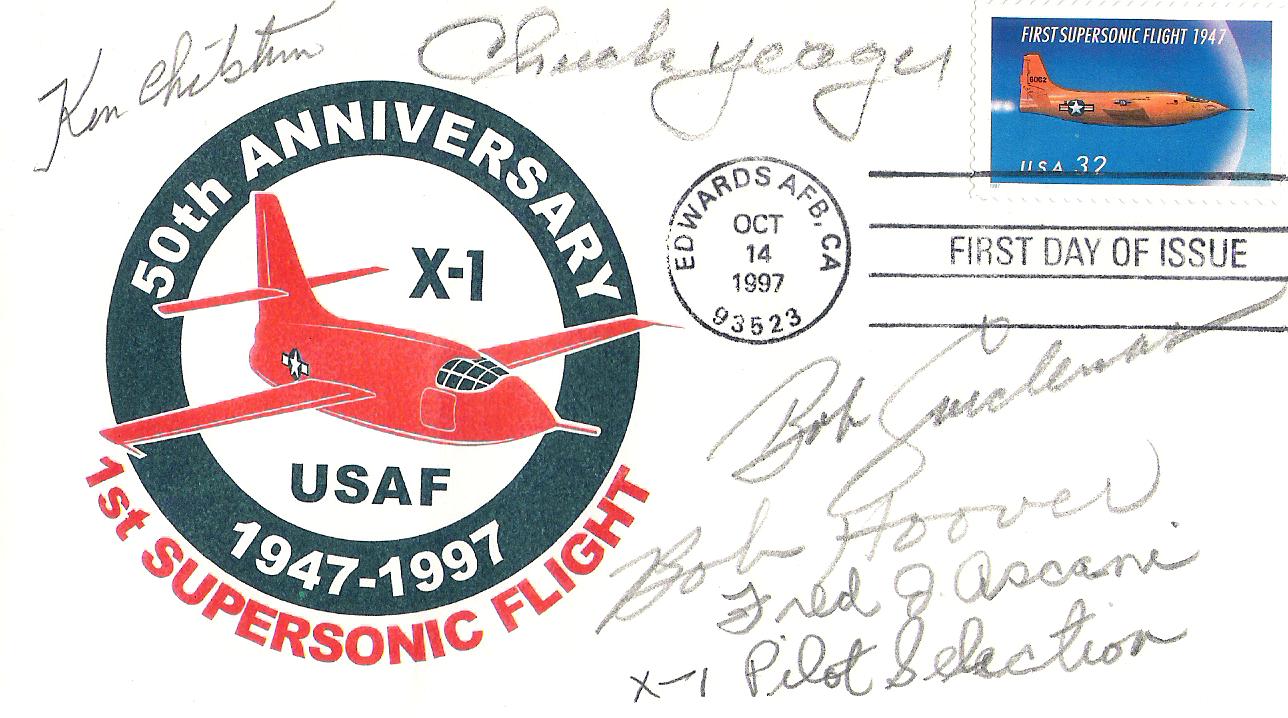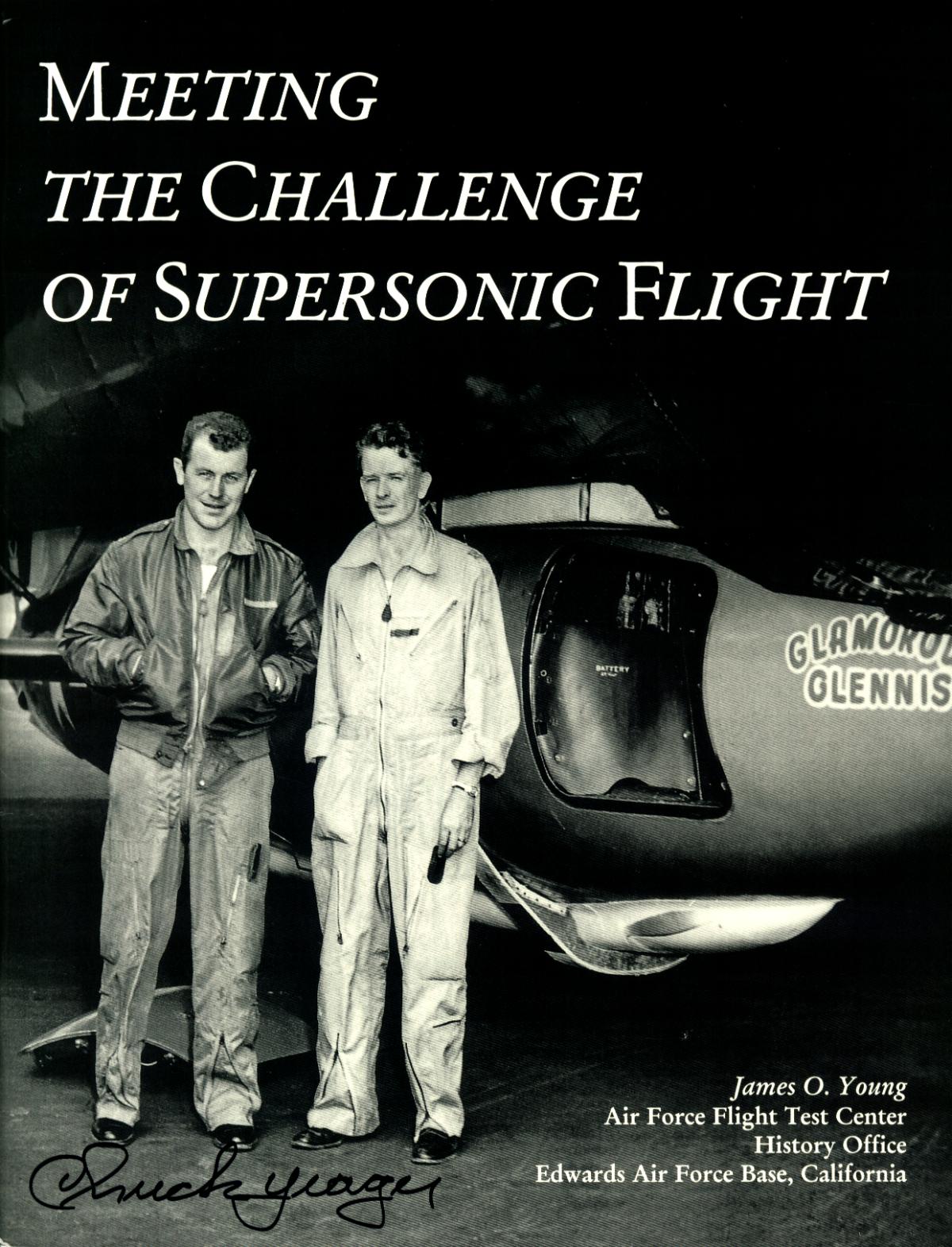Brigadier General Chuck Yeager - (1923-2020)
Retired Air Force Brigadier General Charles E. "Chuck" Yeager gained fame as the first man to fly faster than the speed of sound. This historic flight in the rocket powered Bell X-1 aircraft took place on October 14th 1947, at Muroc (now Edwards Air Force Base), California. Muroc field was named after the town of Muroc formed by the Corum (Muroc spelled backwords) brothers in the early 20th century.
General Yeager was born Feb. 13, 1923, in Myra, West Virginia. He attended the Citizens Military Training Camp at Fort Benjamin Harrison, Indiana, in 1939 and 1940, and on September 12th, 1941, enlisted as a private in the Army Air Corps. He was later accepted for pilot training under the flying sergeant program in July 1942, and received his pilot wings and appointment as a flight officer in March 1943 at Luke Field, Arizona.
After completing basic training at Ellington Field, Texas, he served for two months at Mather Field, California, and later at Moffet Field, California. On Dec. 7, 1941, the United States entered World War II and General Yeager was transferred to Victorville Air Base (now George Air Force Base), California, where he worked on AT-11 aircraft and received promotions to private first class and to corporal.
In July 1942, General Yeager was selected for pilot training and graduated March 10, 1943, from Luke Field, Phoenix, Arizona. He was promoted from corporal to flight officer.
General Yeager's first assignment was as a P-39 pilot with the 363d Fighter Squadron in Tonopah, Nevada.
As a member of the 363d he trained at various bases in the United States before going overseas to England in
November 1943. Based at Leiston, Suffolk, England, he flew P-51s in combat against Germany, shooting down one ME-109 and an HE-111K before being shot down on his eighth combat mission over German-occupied France on March 5, 1944. He evaded capture when elements of the French Maquis helped him to reach the safety of the Spanish border.
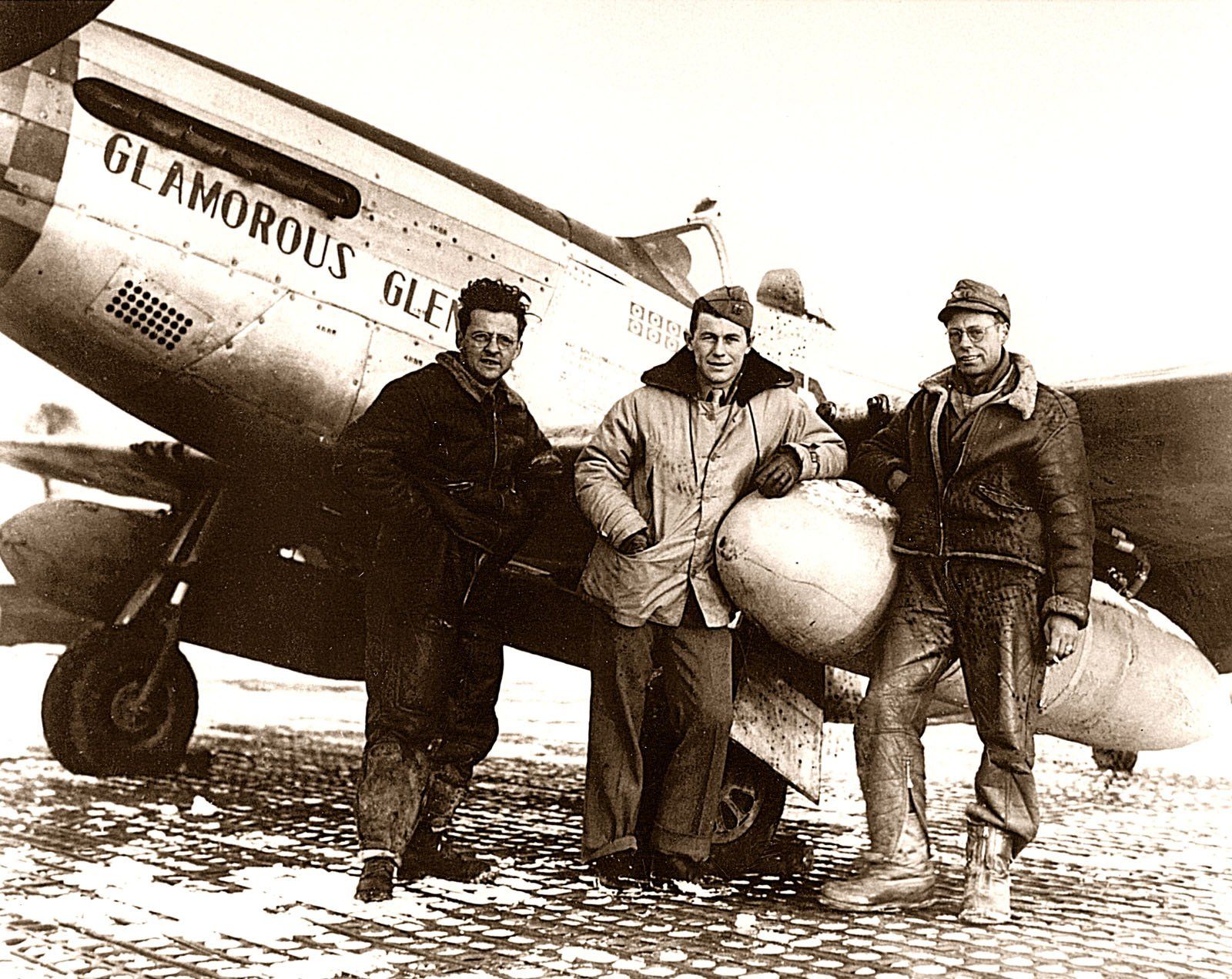
Yeager remained in Spain until the summer of 1944 when he was released to the British at Gibraltar and returned to England. When he returned to his squadron, they could not believe that this was the same Yeager that had been shot down. He was twenty pounds heavier and had looked like he had been on vacation with a serious sun-tan. He was the first evadee to make it back to his base.
Initially being told he could no longer fly missions over Europe (he could have been tortured by the Gestapo into giving away secrets of the French Maquis and then shot), he took his case to General Dwight D Eisenhower and pleaded to be allowed to continue his tour. Yeager said "I don't want to leave my buddies after only eight missions. It just isn't right. I have a lot of fighting left to do". Pretty soon after his return, the Maquis were openly fighting the German's on the ground. Yeager's squadron commander Ed Hiro gave him the news that General Eisenhower had decided in his favour that he could continue his fight.
Yeager returned to his squadron and flew 56 more combat missions, shooting down 11 more German aircraft. Between July and October he was promoted from second lieutenant to captain.
Yeager returned to the United States in 1945 to attend the instructor pilot course and subsequently served as an instructor pilot at Perrin Field, Texas. In July 1945 he went to Wright Field, Ohio, and participated in various test projects including the P-80 "Shooting Star" and the P-84 Thunderjet." He also evaluated all of the German and Japanese fighter aircraft brought back to the United States after the war. This assignment led to his subsequent selection as pilot of the nation's first research rocket aircraft, the Bell X-1.
In January 1946 General Yeager attended the test Pilot School at Wright Field, Ohio, and in August 1947 was sent to Muroc Air Base, California as the project officer on the Bell XS-1.
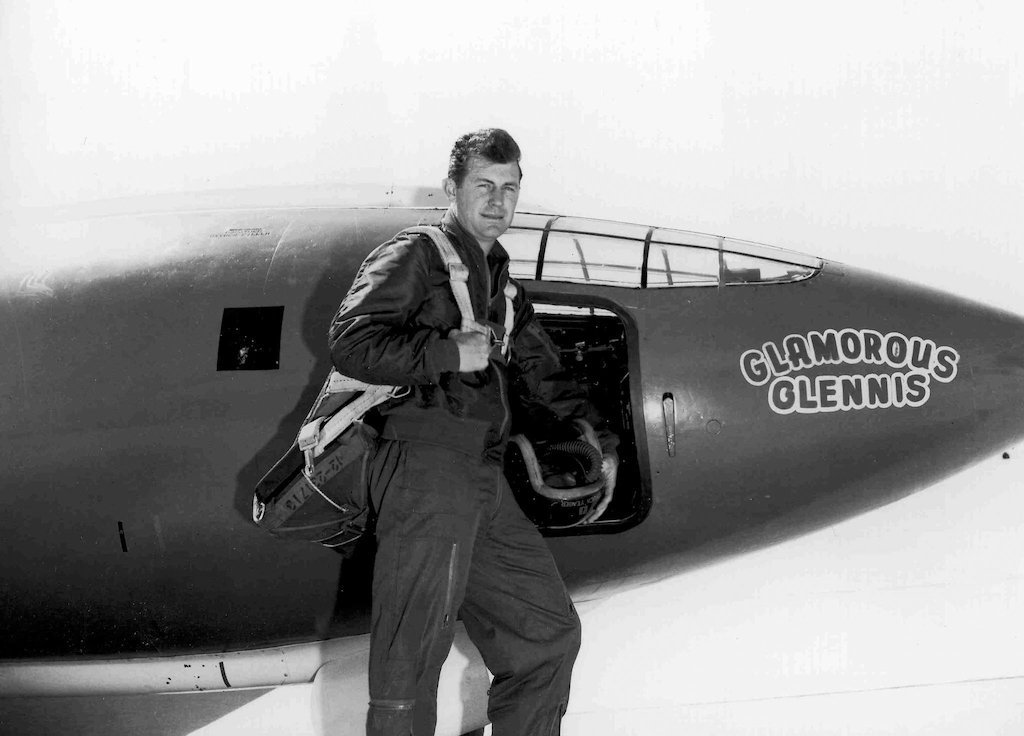
On October 14, 1947, he flew the XS-1 past the sound barrier, becoming the world's first supersonic pilot reaching a speed of Mach 1.07 or 670mph. During the next two years, he flew the X-1 33 times, reaching a maximum speed of 957mph or Mach 1.45 and 70,000 feet. He was the first and only American to make a ground take-off in a rocket-powered X-Plane. In December 1953 he flew the Bell X-1A 1,650 mph or Mach 2.44, a record which still stands for straight-winged aircraft.
In 1952 General Yeager attended the Air Command and Staff College at Maxwell Air Force Base, Alabama and two years later returned to Europe to serve as commander, 417th Fighter Squadron, Hahn Air Base, West Germany, and at Toul-Rosieres Air Base, France. During his tour in Europe, he took first-place honors in the 1956 Weapons Gunnery Meet.
In 1957 he returned to the United States and was assigned to the 413th Fighter Wing at George Air Force Base, California and in 1958 became commander of the 1st Fighter Squadron, flying new F-100 "Super Sabres."
General Yeager graduated from the Air War College, Maxwell Air Force Base, Alabama in June 1961 and in 1962, became commandant of the ARPS (Aerospace Research Pilot School)now the USAF Test Pilot School, where all military astronauts were trained.
On December 10, 1963, while testing the Lockheed NF-104 rocket-augmented aerospace trainer, at 104,000 feet (nearly 21 miles up) the rocket motor flamed out. Without engine power, (the main engine had been shut down) there was no hydraulic control for the flight controls, and due to the height the rocket motor flamed out, the reaction controls were useless. Yeager tried by using the spin-recovery 'chute to regain engine rpm, but the task was fruitless. The airplane made 14 complete flat spins on its way to the desert floor, Yeager stayed with it for all but the last spin. He ejected at 8,500 feet and unfortunately, the ejection seat smashed through his visor and poured hot rocket-lava onto Yeager's face. The lava ignited the oxygen in the pressure suit and Yeager's face was an inferno. Only once he managed to open his visor did the flames extinguish. The rocket lava had also burned through the lines of the parachute and after landing safely, when the 'chute had been gathered the line just broke apart in his hand. In this incident he became the first pilot to make an emergency ejection in the full pressure suit needed for high altitude flights.
In July 1966 he assumed command of the 405th Fighter Wing at Clark Air Base, Republic of the Philippines and flew 127 missions in South Vietnam.
In February 1968 he assumed command of the 4th Tactical Fighter Wing at Seymour Johnson Air Force Base, North Carolina and deployed with the wing to the Republic of Korea during the USS Pueblo crisis.
In July 1969 he became vice commander, 7th Air Force, at Ramstein Air Base, West Germany and in August was promoted to brigadier general.
In 1971 he assumed duties as the United States defence representative to Pakistan.
In March 1973 General Yeager went to the Air Force Inspection and Safety Center, Norton Air Force Base, California and became director in June 1973.
General Yeager retired from active duty in the U.S. Air Force on March 1, 1975.
His military decorations and awards include the Distinguished Service Medal, Silver Star with one oak leaf cluster, Legion of Merit with one oak leaf cluster, Distinguished Flying Cross with two oak leaf clusters, Bronze Star Medal with "V" device, Purple Heart, Air Medal with 10 oak leaf clusters, the Air Force Commendation Medal, Distinguished Unit Citation Emblem with one oak leaf cluster and the Air Force Outstanding Unit Award.
His civilian awards include the MacKay Trophy, Federation Aeronautique International Gold Medal Award, the Collier Trophy and the Harmon Trophy. He was selected one of the Ten Outstanding Young Men by the Junior Chamber of Commerce in 1953, elected to the Aviation Hall of Fame in 1973, presented the Golden Plate Award by the American Academy of Achievement in 1974 and the Horatio Alger Award in 1986, awarded a peacetime Congressional Medal of Honor by the Congress of the United States (presented by President Gerald Ford in 1976), and was awarded the Presidential Medal of Freedom by President Ronald Reagan in May 1985.
General Yeager's professional military education includes Air Command and Staff College in 1952 and the Air War College in 1961. He was awarded honorary doctor of science degrees from West Virginia University in 1948, From Marshall University of Huntington, West Virginia, in 1969, from Salem College in 1974, and from the University of Charleston in 1983.
General Yeager has flown 201 types of military aircraft and has more than 14,000 flying hours, with more than 13,000 of these in fighter aircraft. He has most recently flown the SR-71, F-15, F-16, F-18 and the F-20 Tigershark.
He married the former Glennis Faye Dickhouse of Grass Valley, California. Mrs. Yeager sadly passed away December 1990. He has two sons, Donald and Michael; and two daughters, Sharon and Susan.
General Yeager remained an active aviation enthusiast, acting as advisor for various films, programs and documentaries on aviation. He was appointed by President Ronald Reagan to serve on the National Commission on Space and the commission to investigate the space shuttle Challenger accident in 1986. General Yeager retired his position as a consultant test pilot for the Air Force Flight Test Center at Edwards Air Force Base on October 14th 1997. In this role, General Yeager was payed the annual salary of $1!
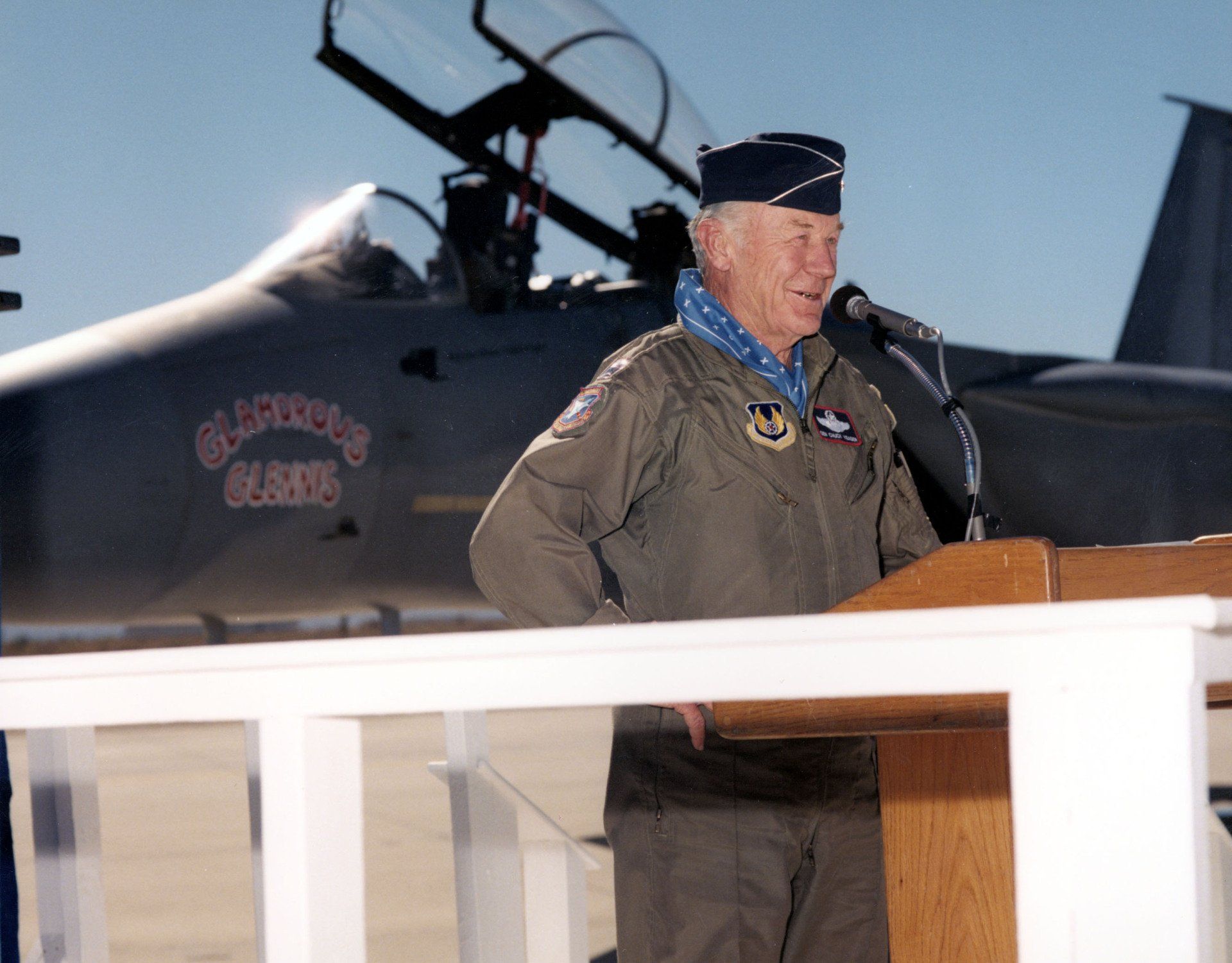
General Yeager has published two books entitled, "Yeager an Autobiography" and "Press On: Further Adventures in the Good Life." and has written text and foreword's for may more, including "The Quest For Mach One", "Into The Unknown", "Wings", "There Once Was A War" and "To Fly & Fight". General Yeager also had a cameo part in Philip Kaufmann's excellent movie "The Right Stuff" and was involved in the flying sequences in "Jet Pilot".
General Yeager married Victoria Scott D’Angelo in 2003 and together had many adventures around the world. General Yeager sadly passed away on December 7th, 2020 at the age of 97.
The slideshow below features photographs of General Yeager from throughout his life.


